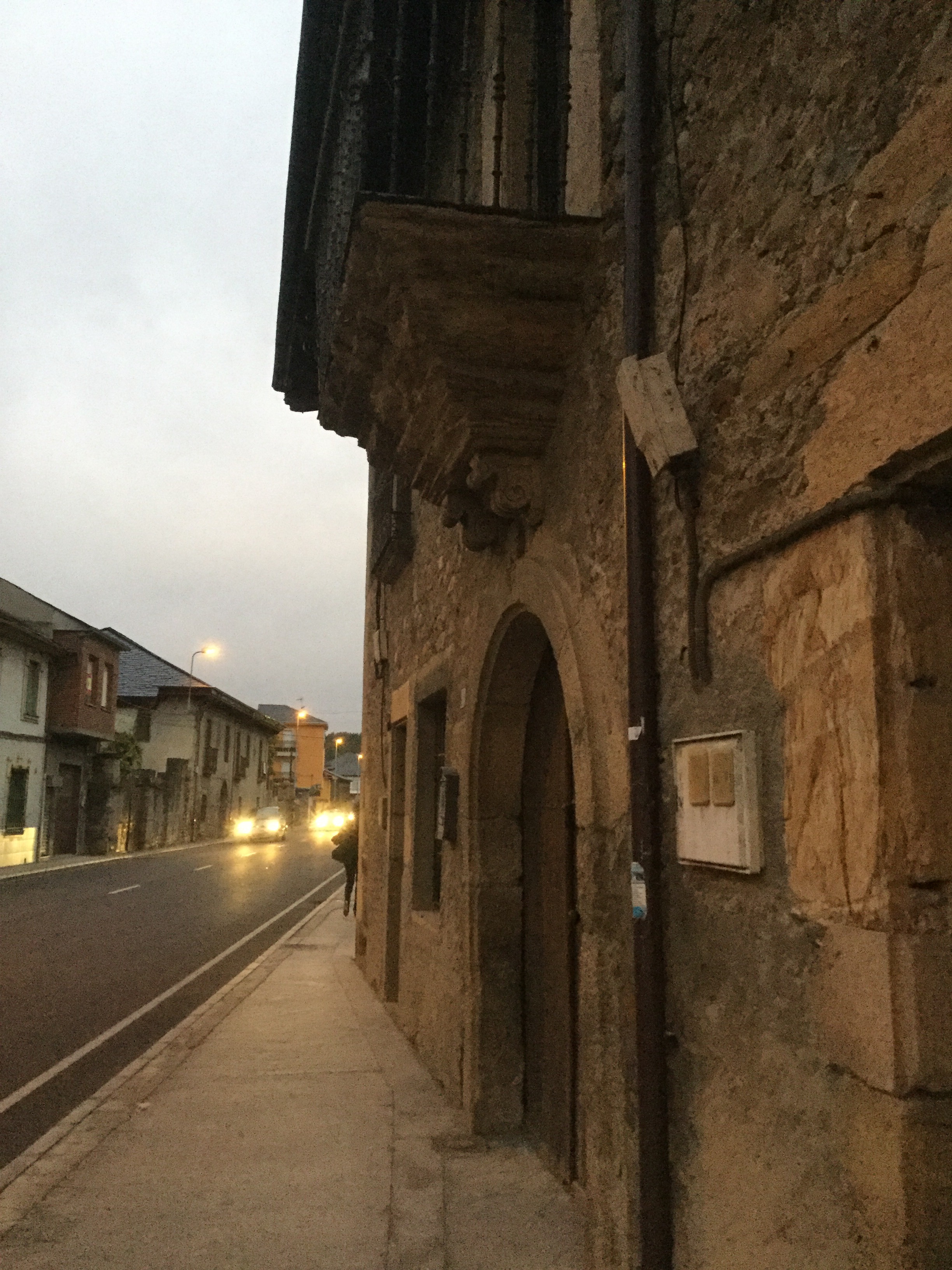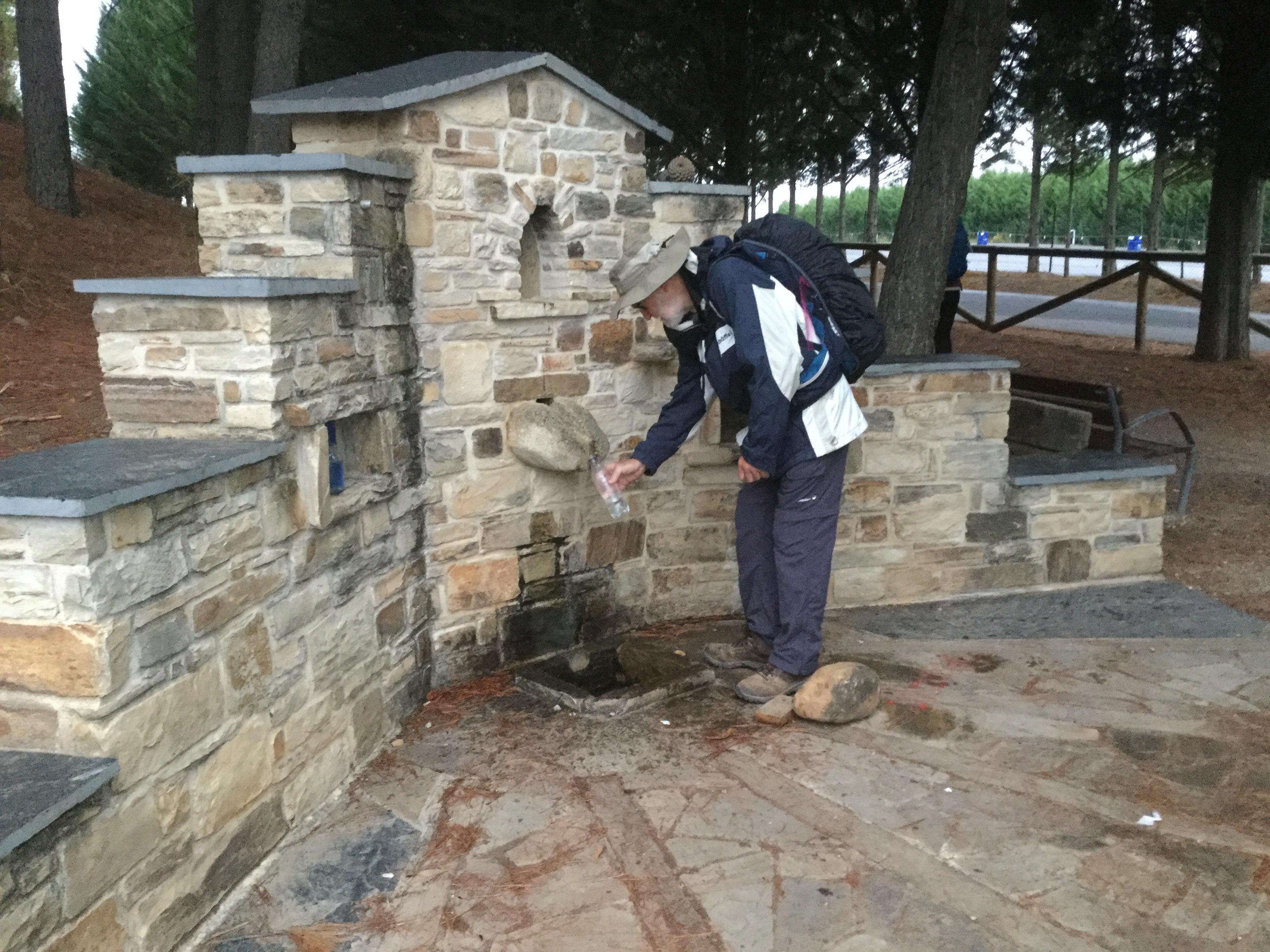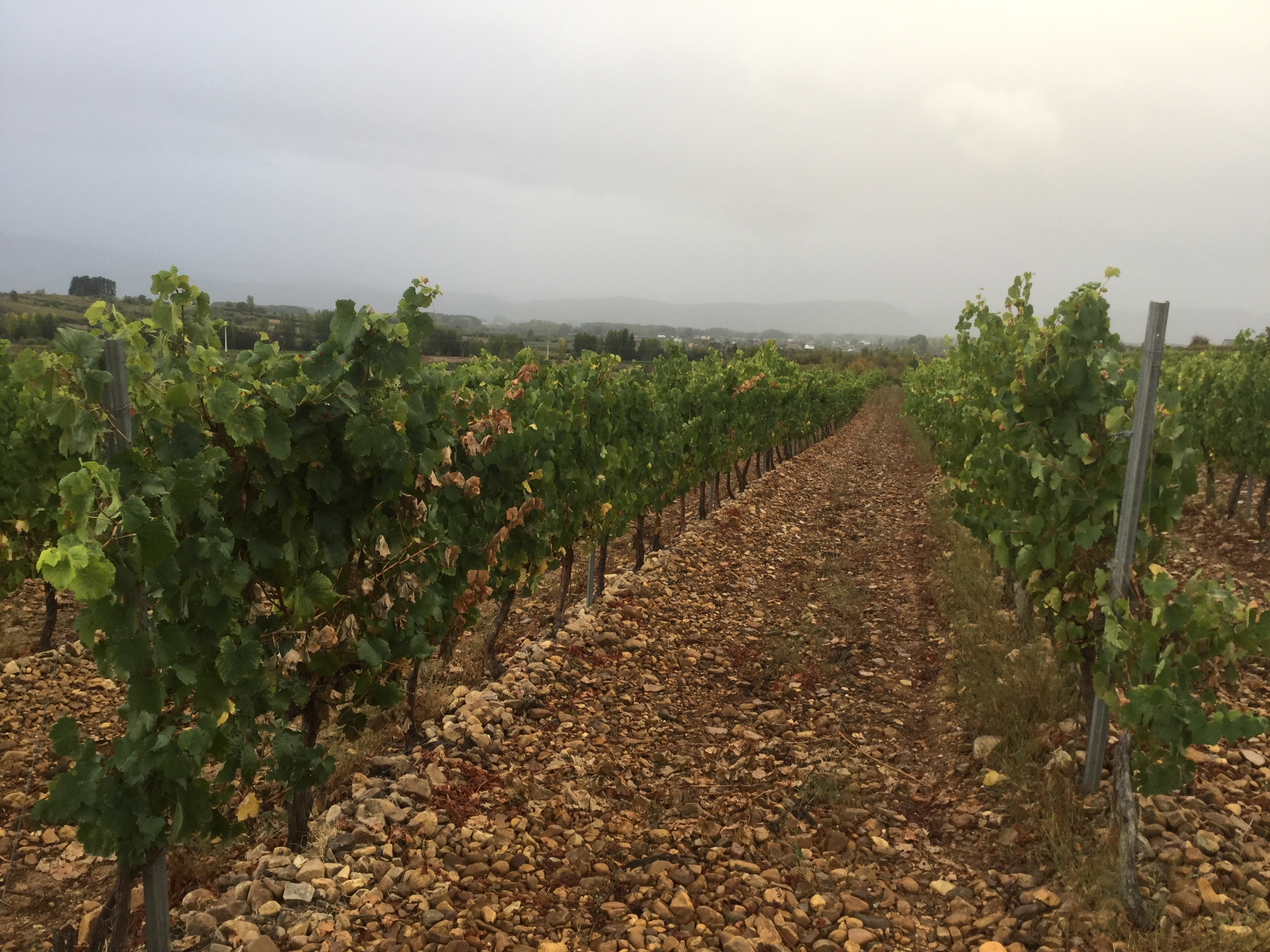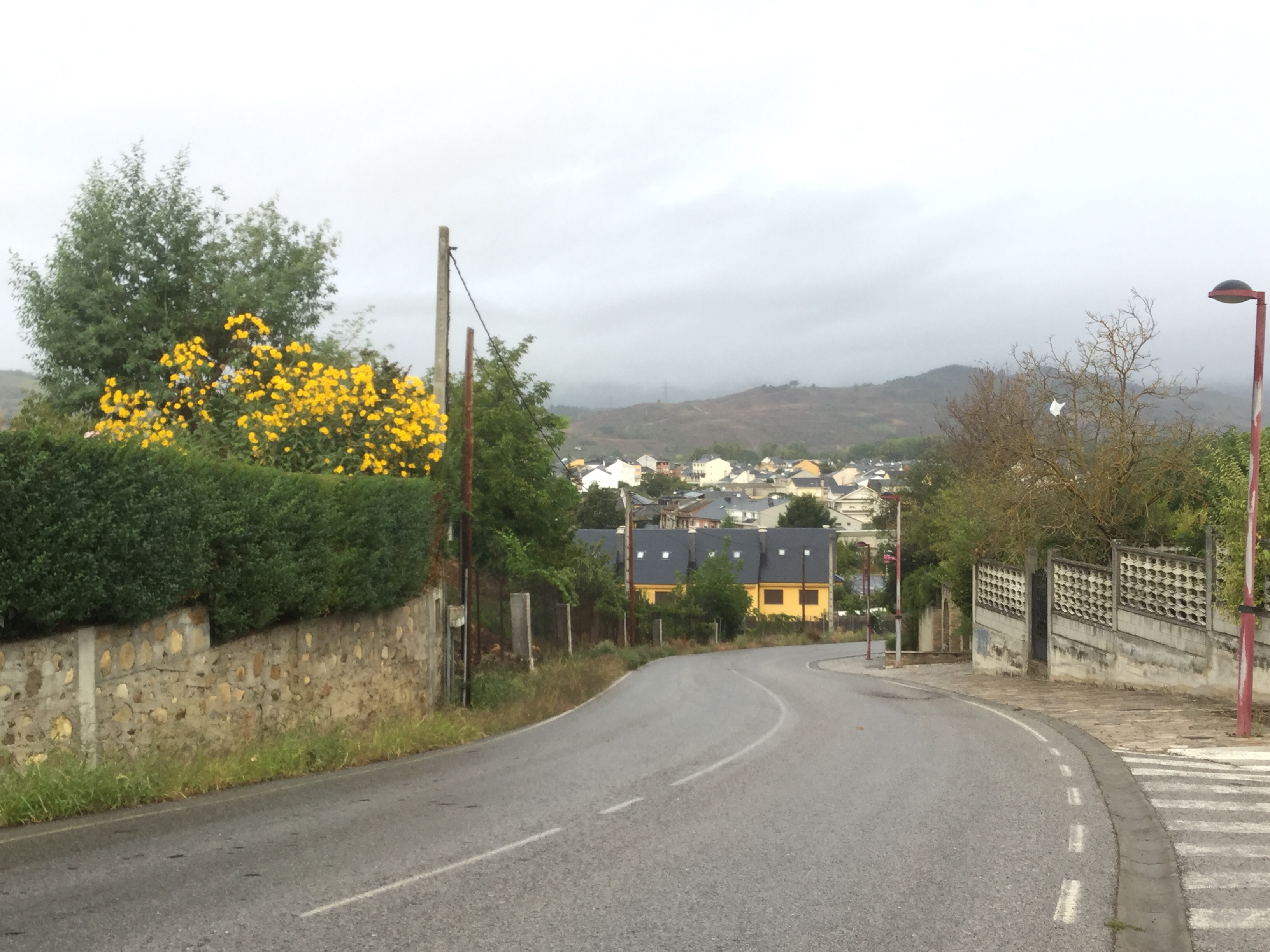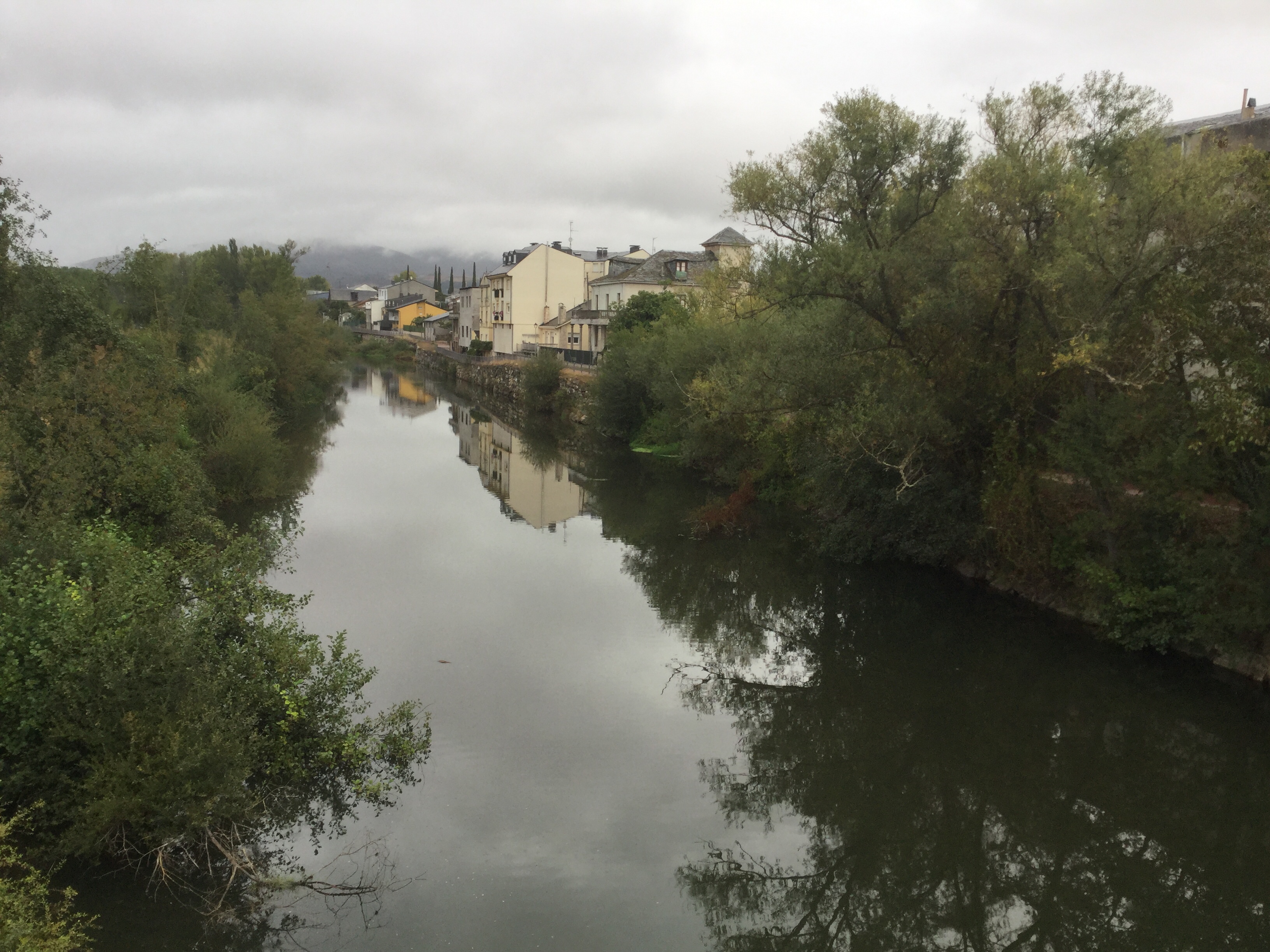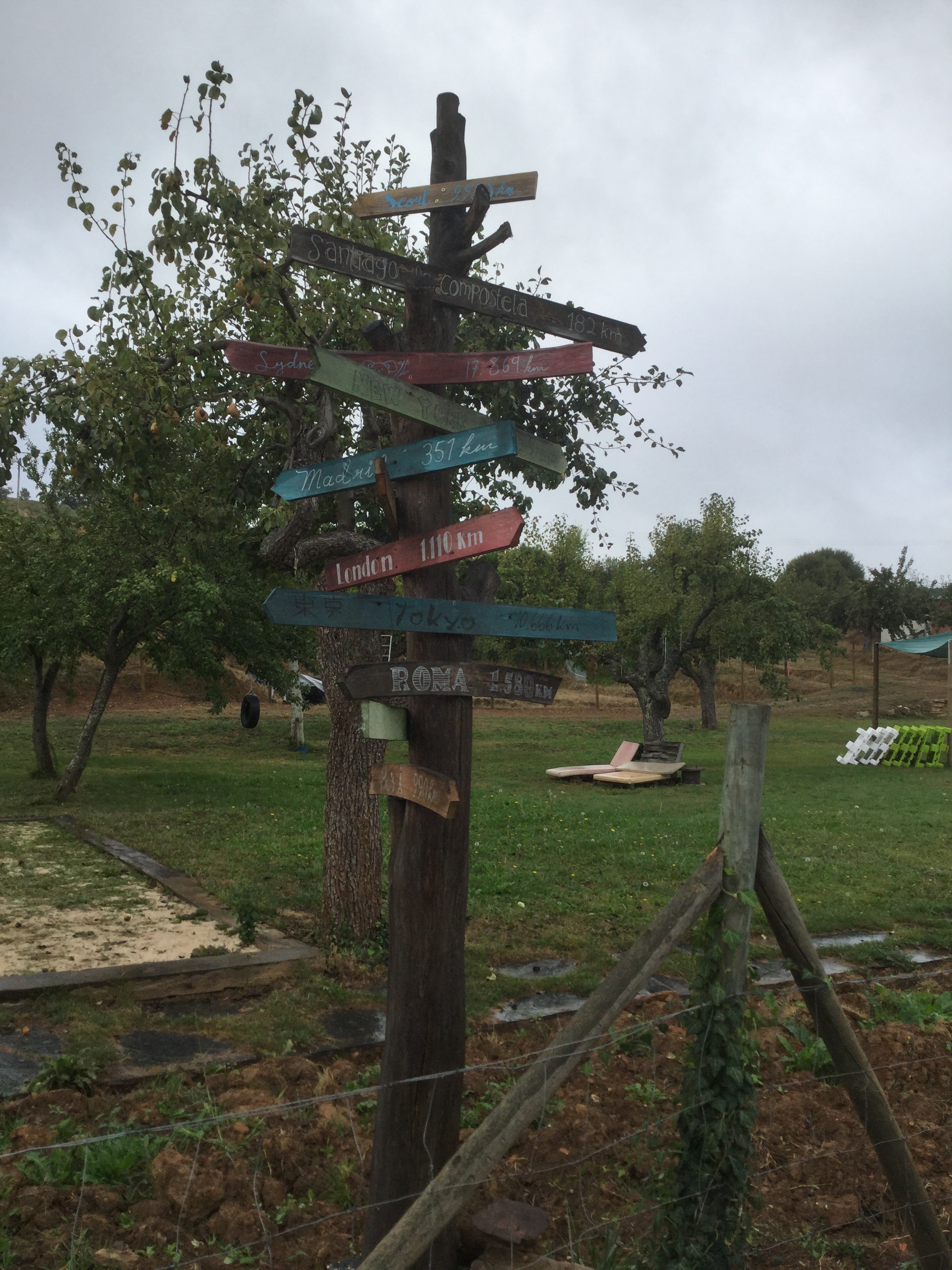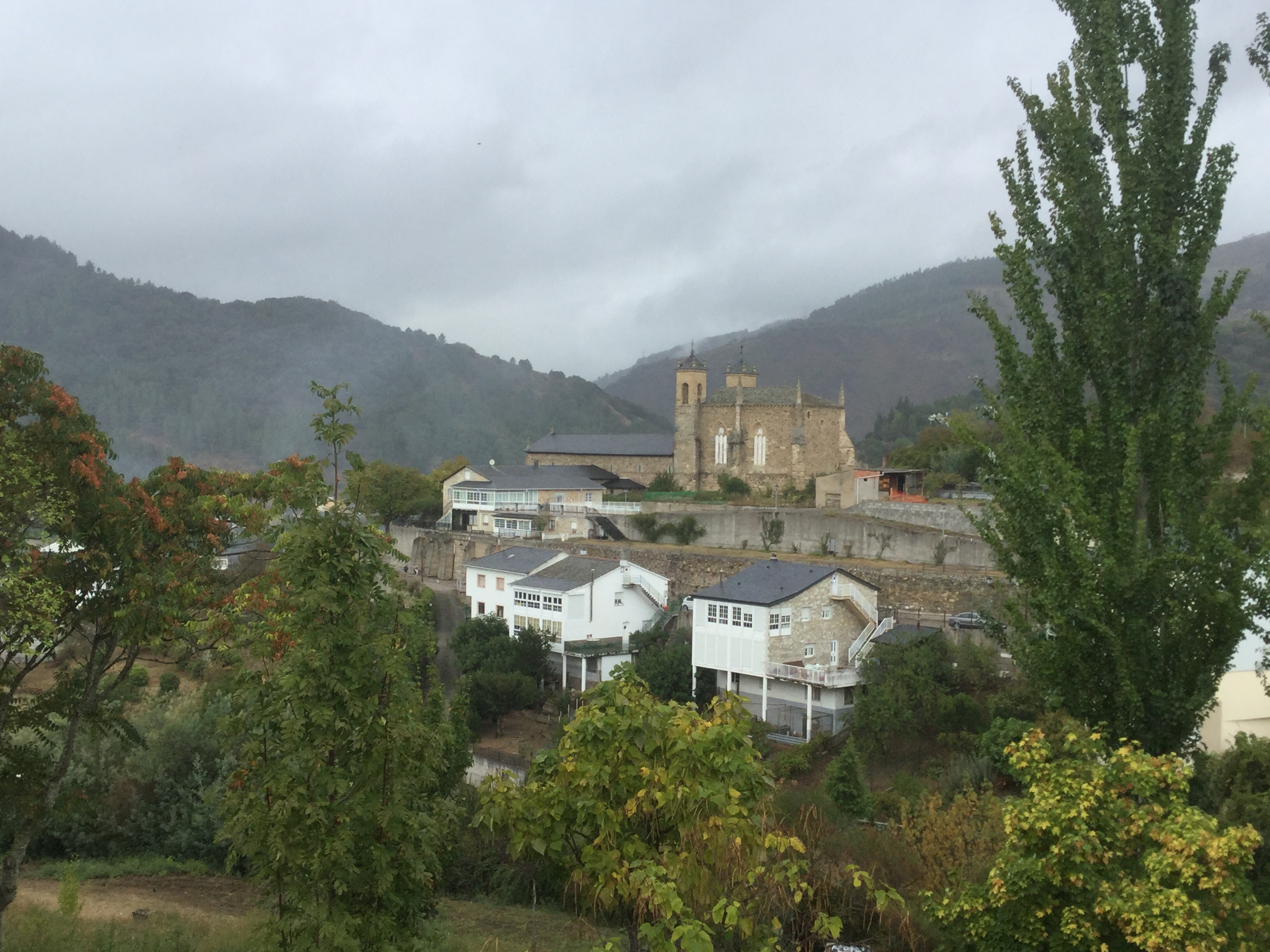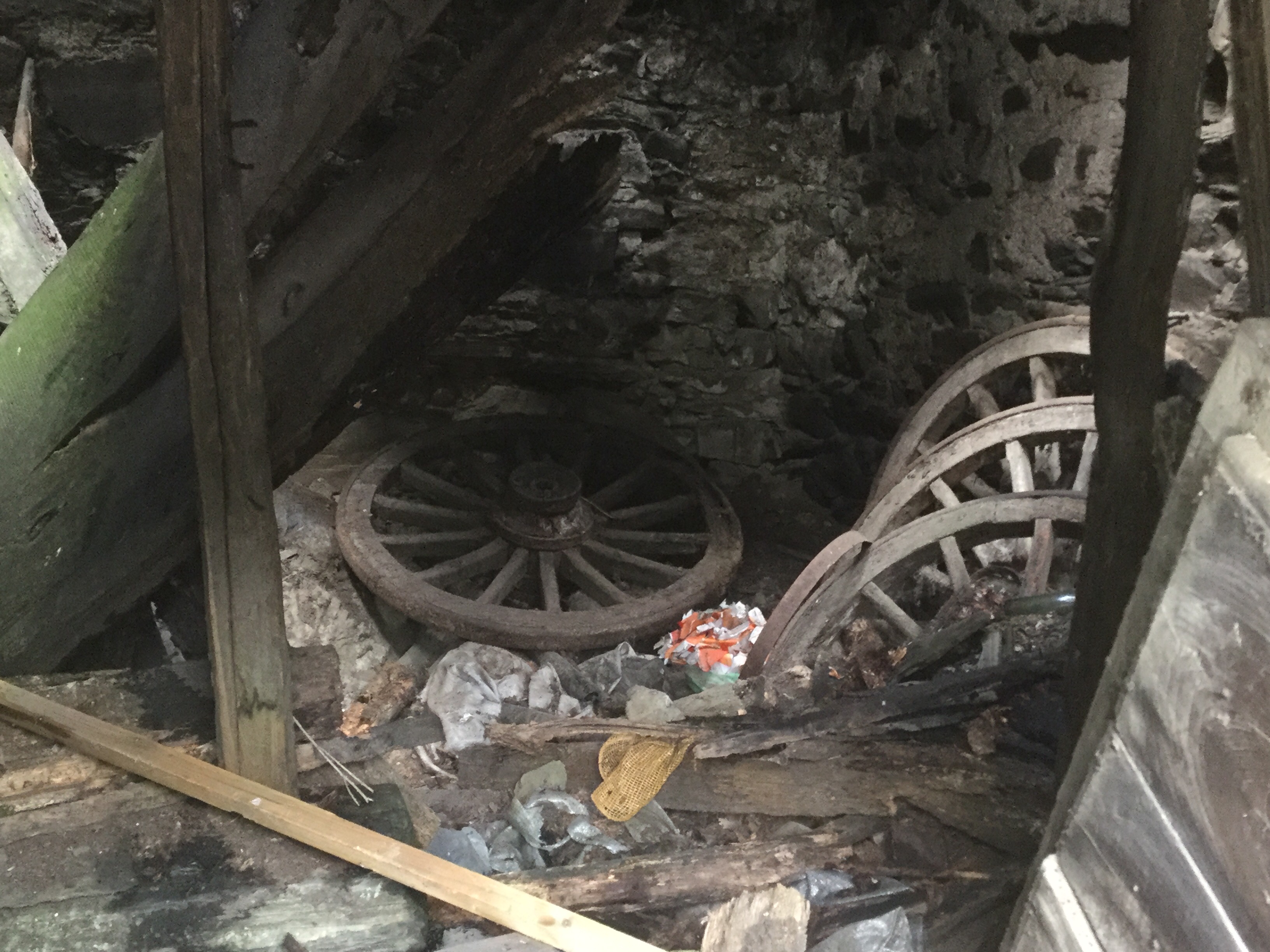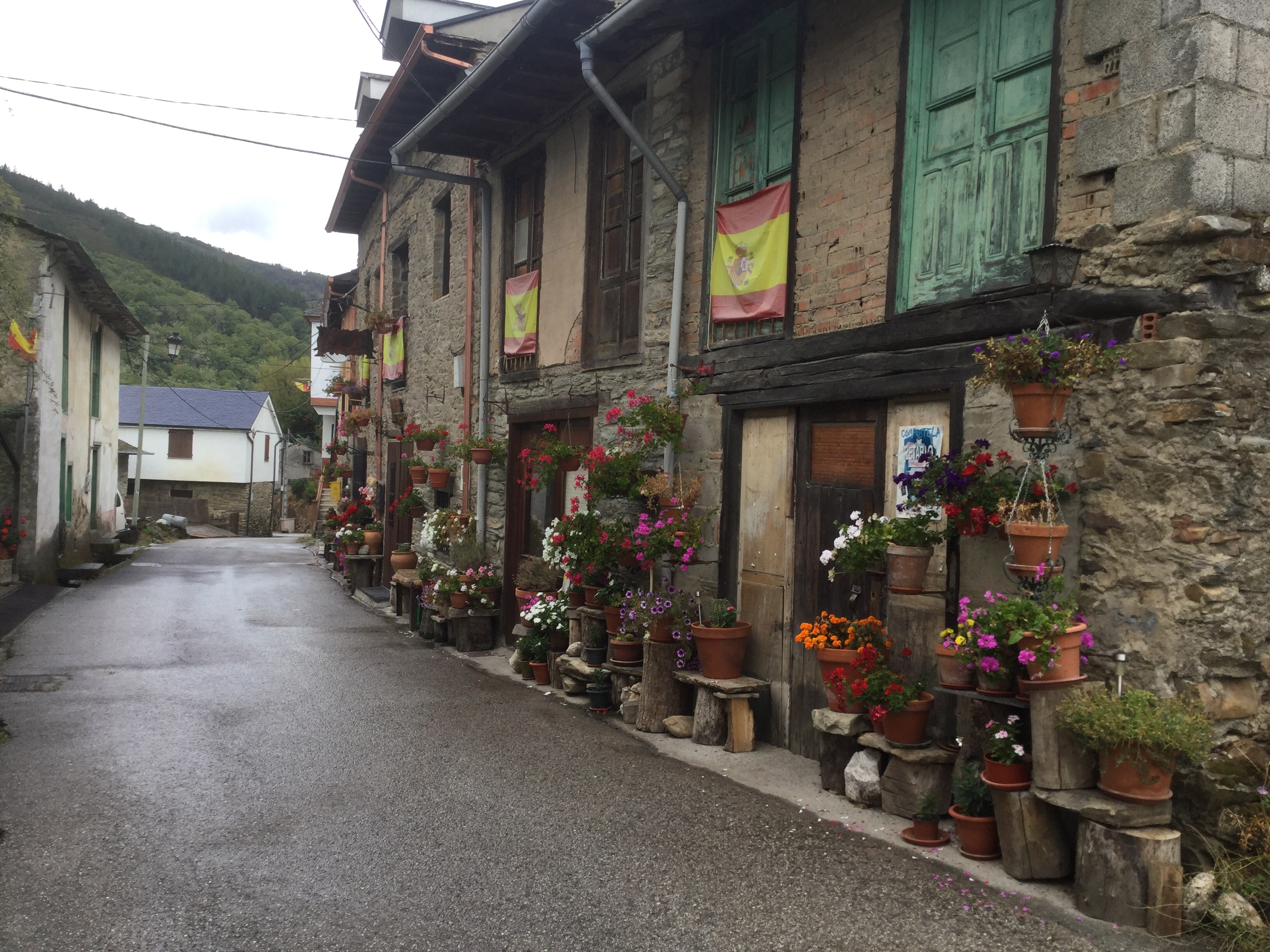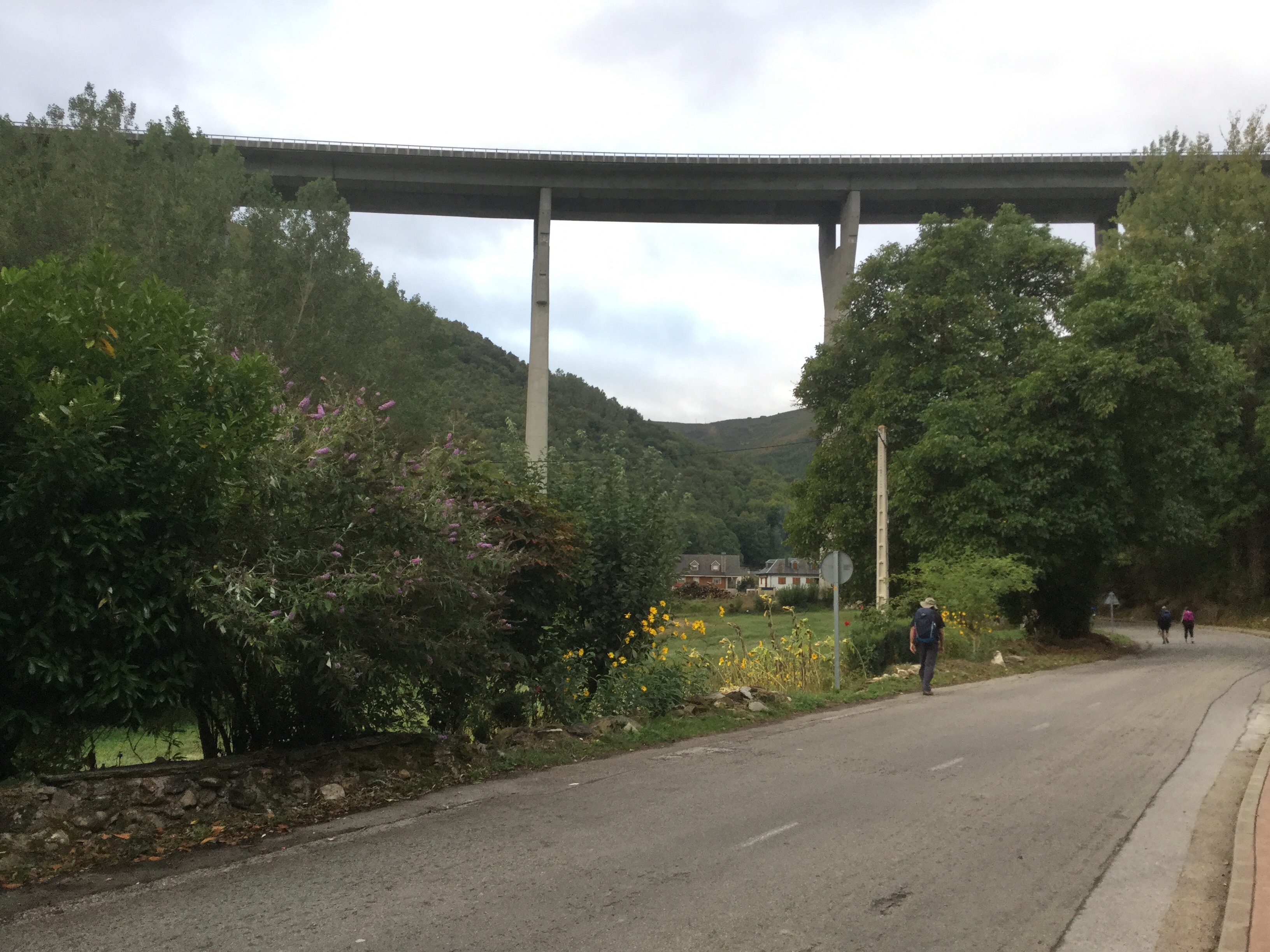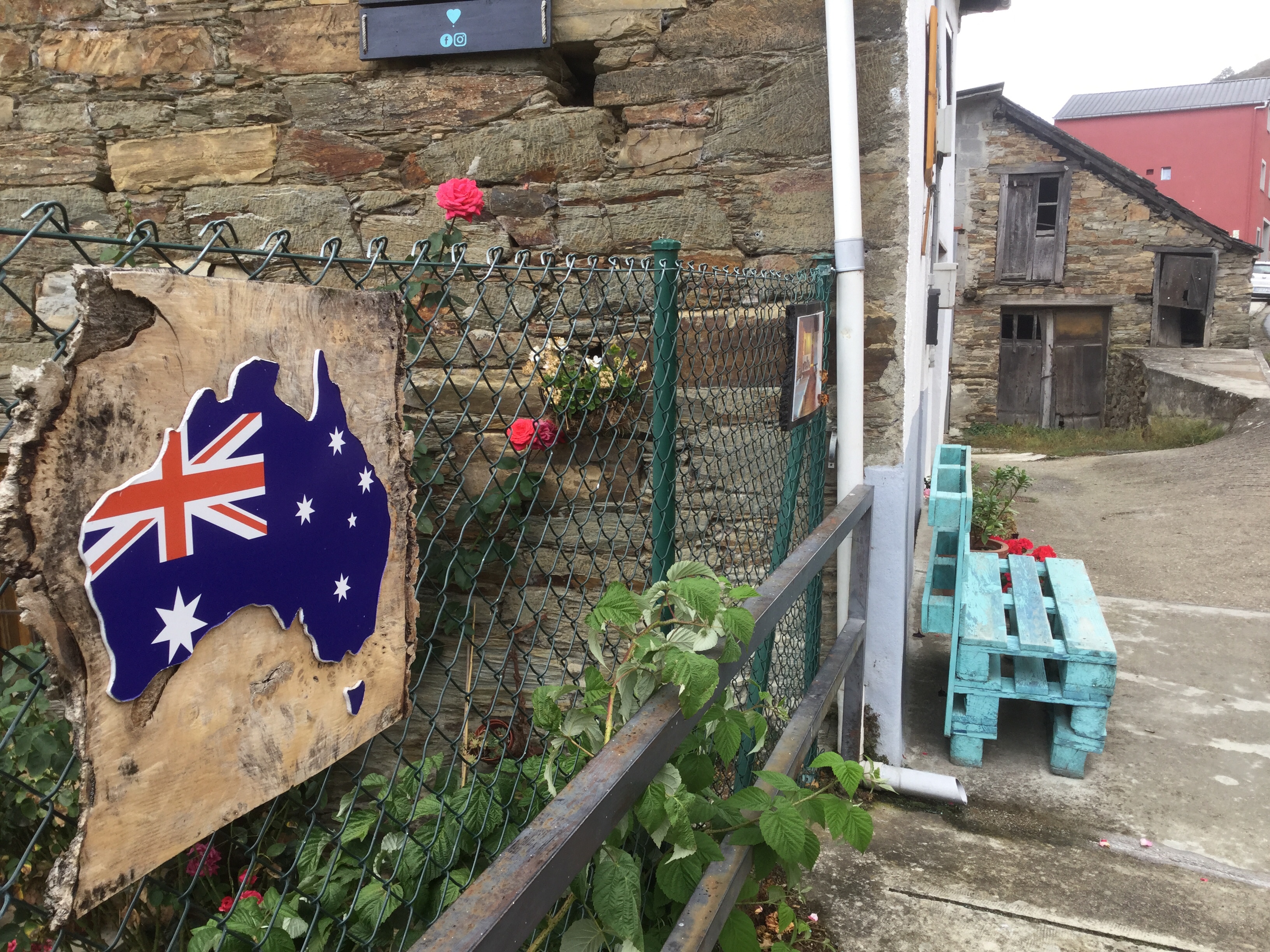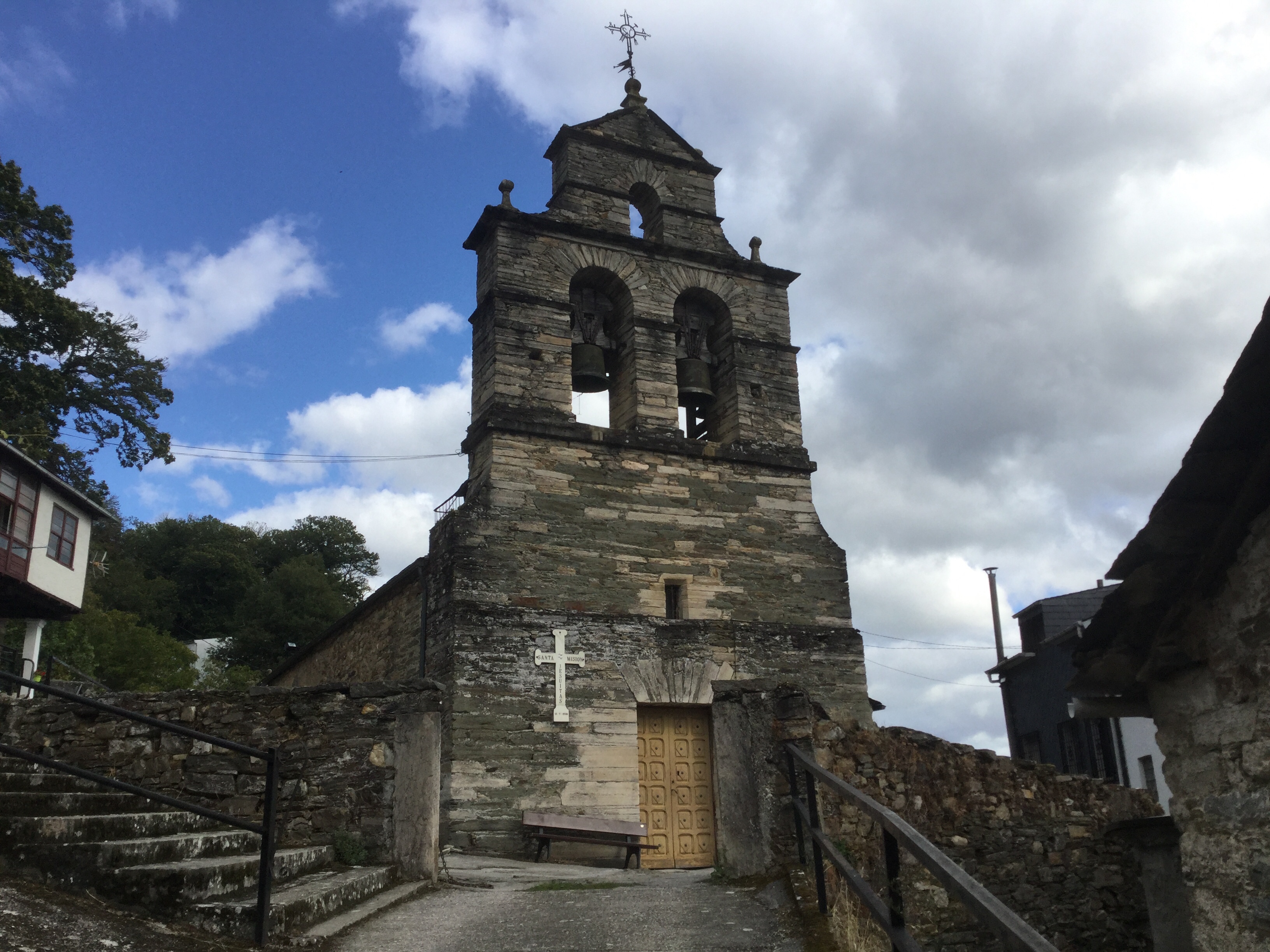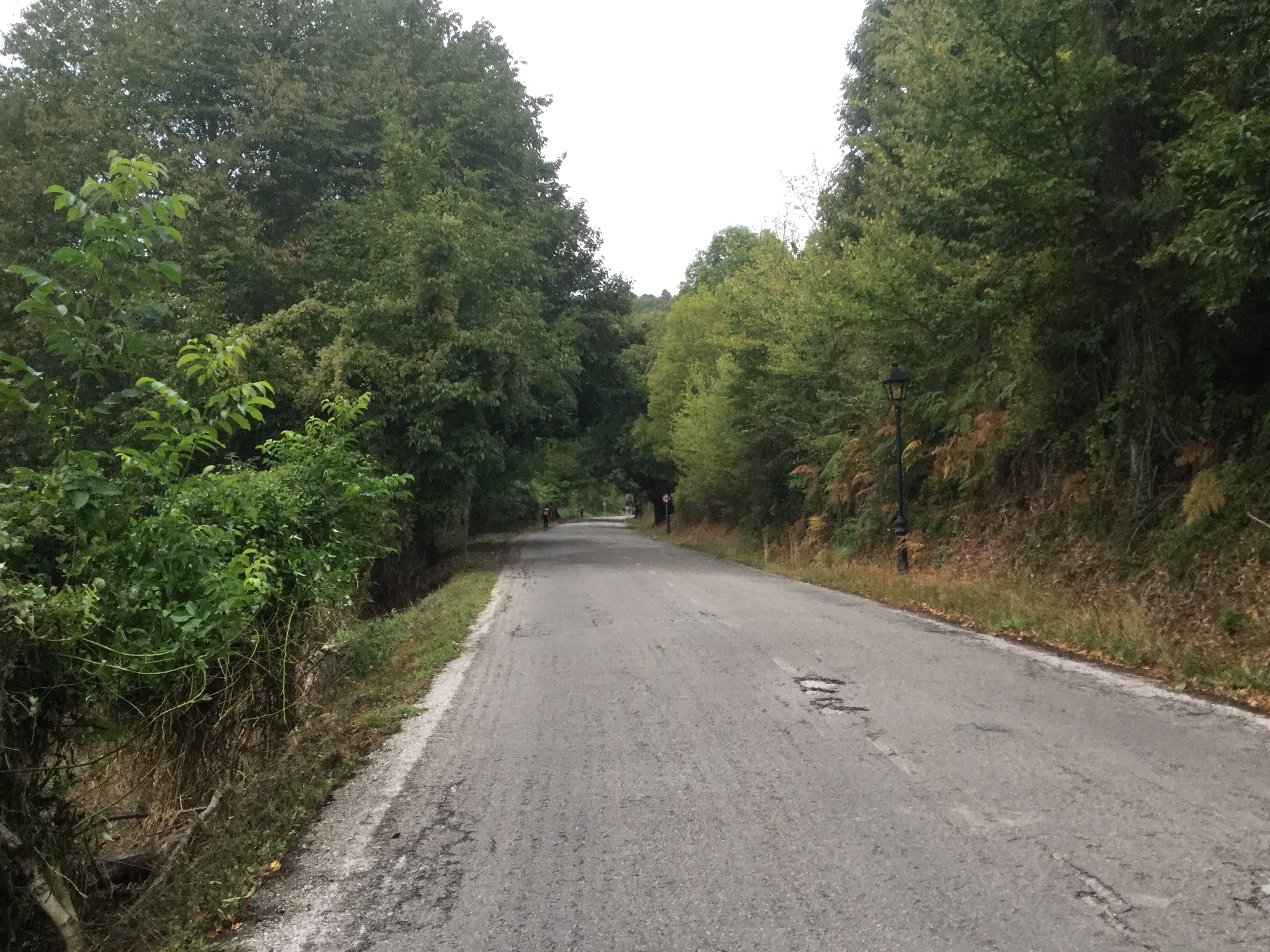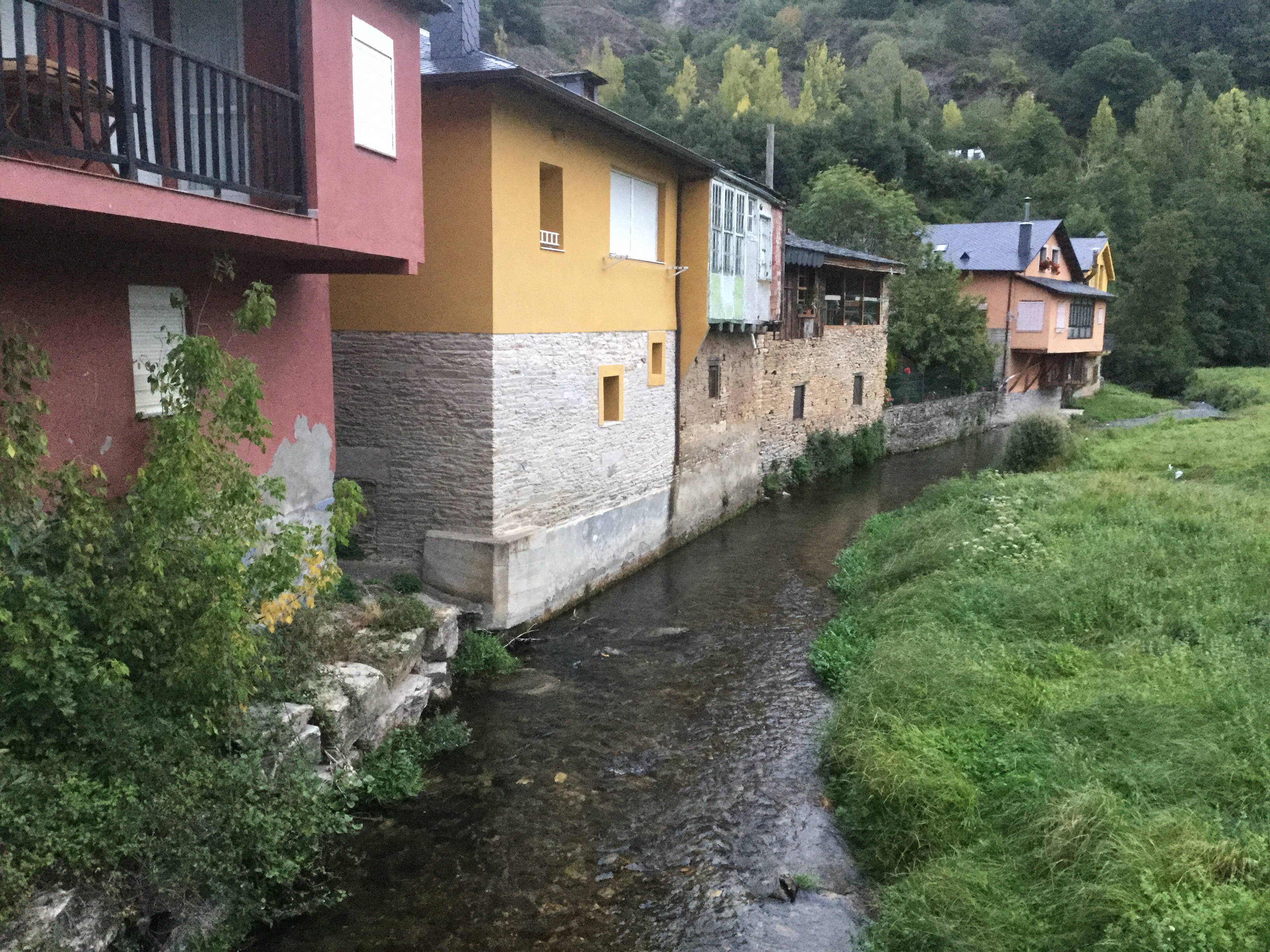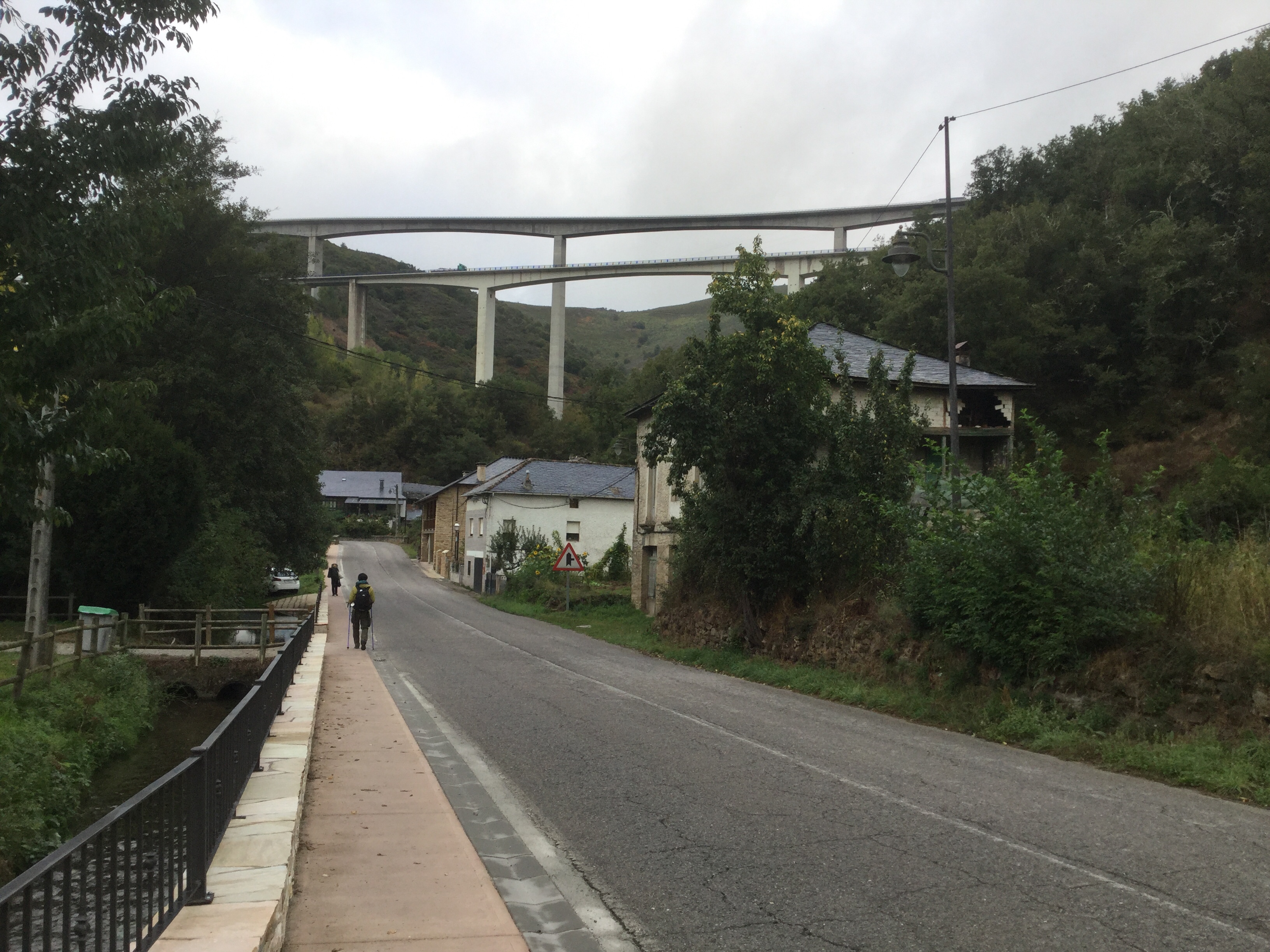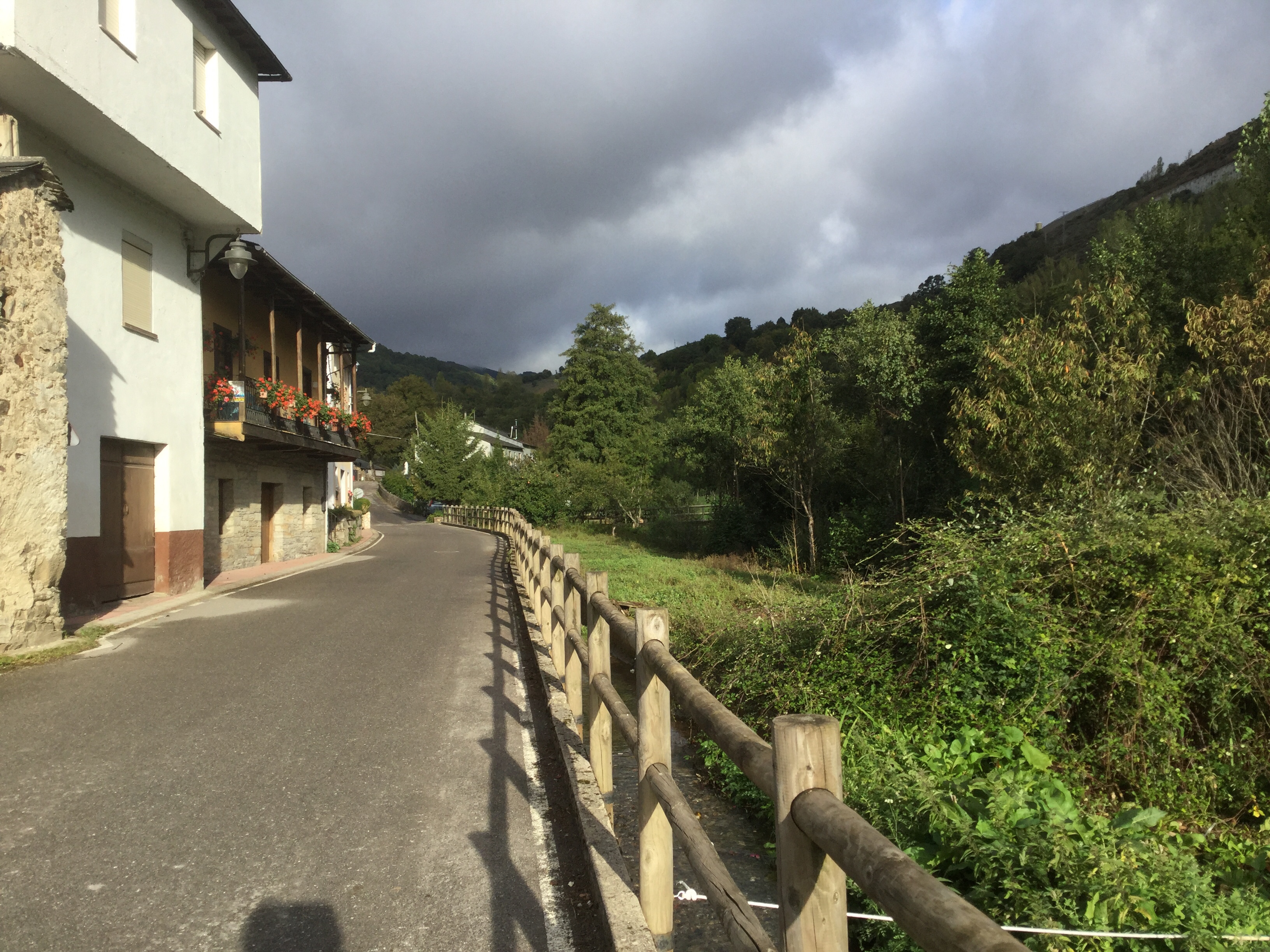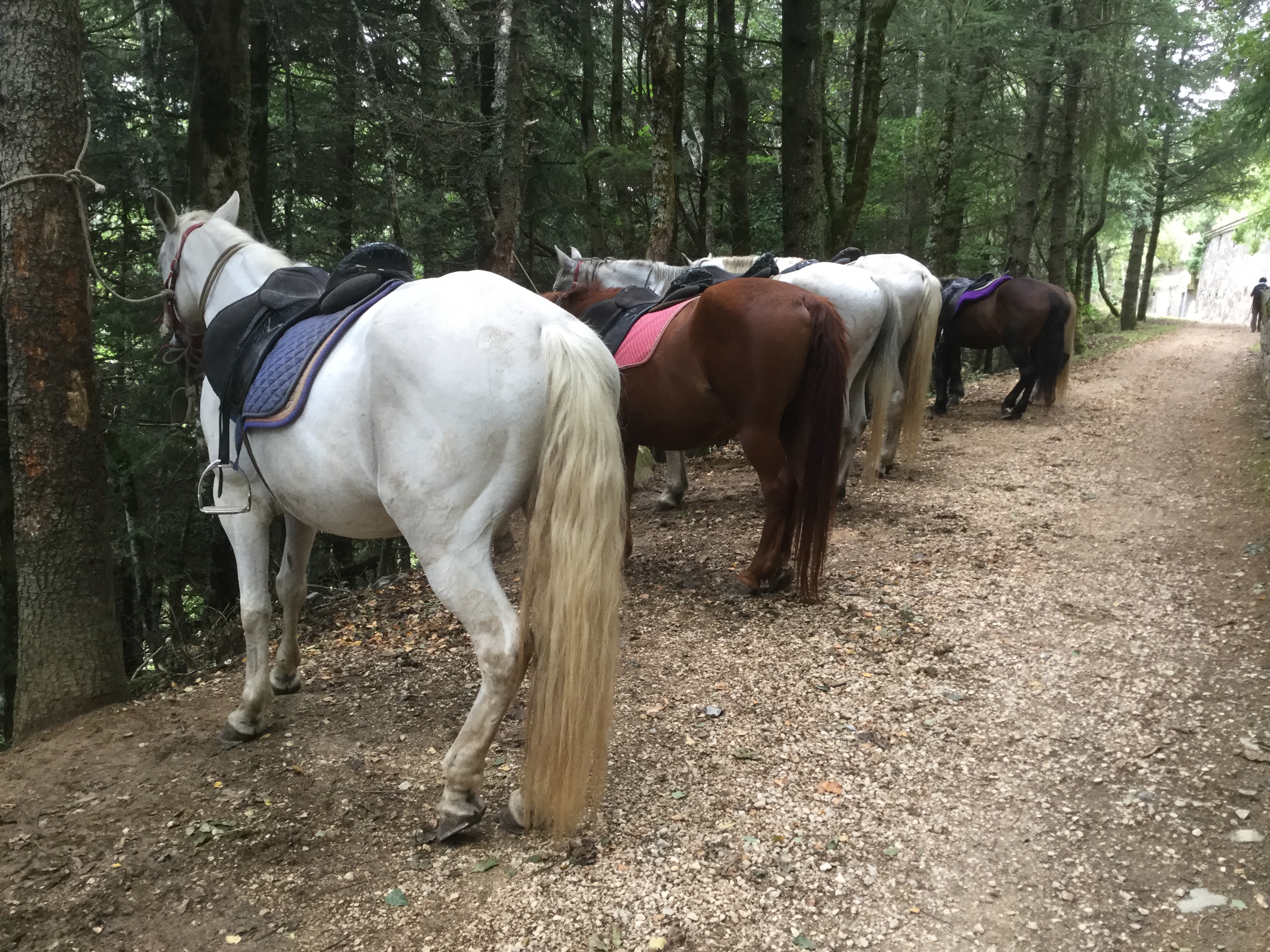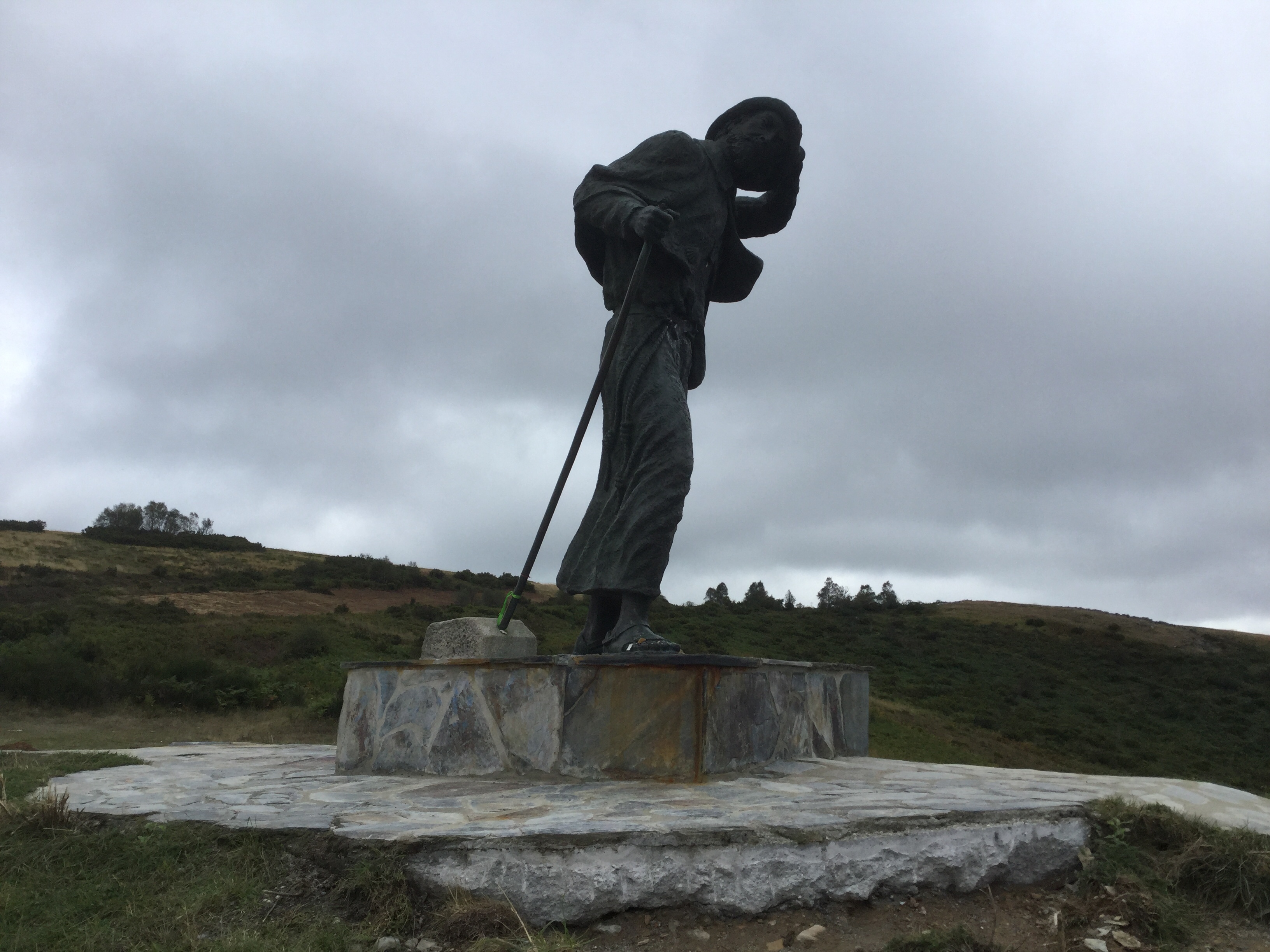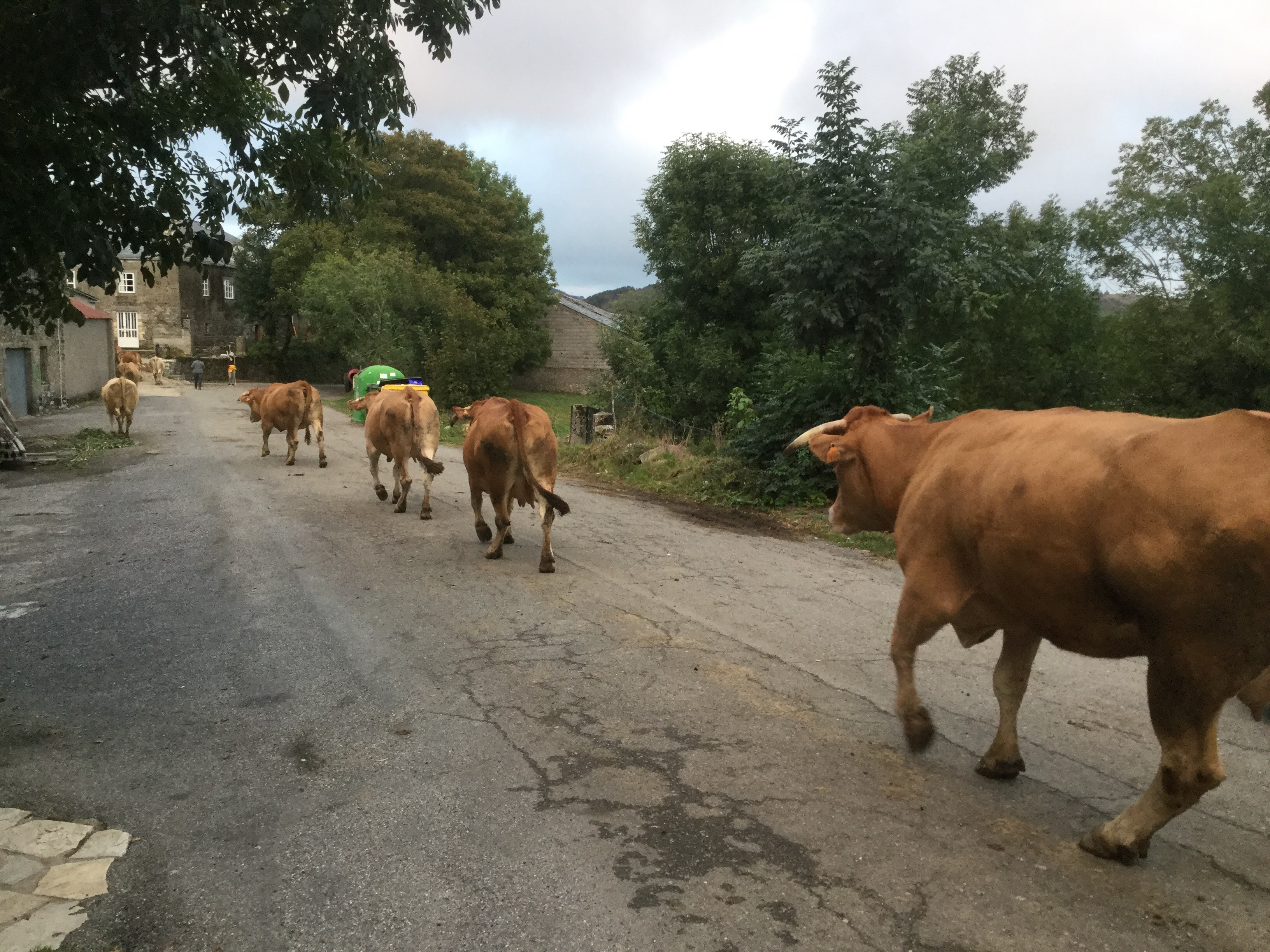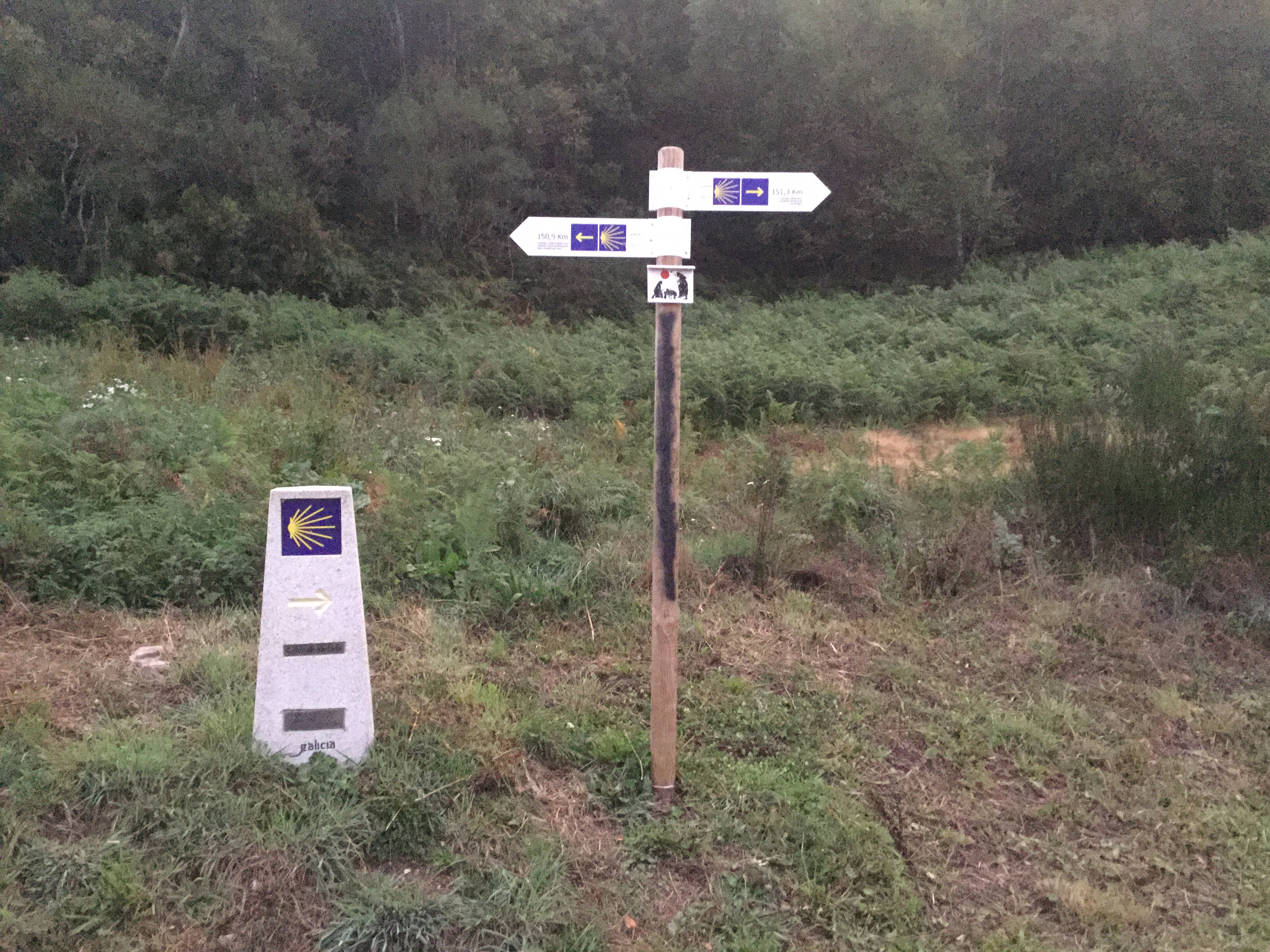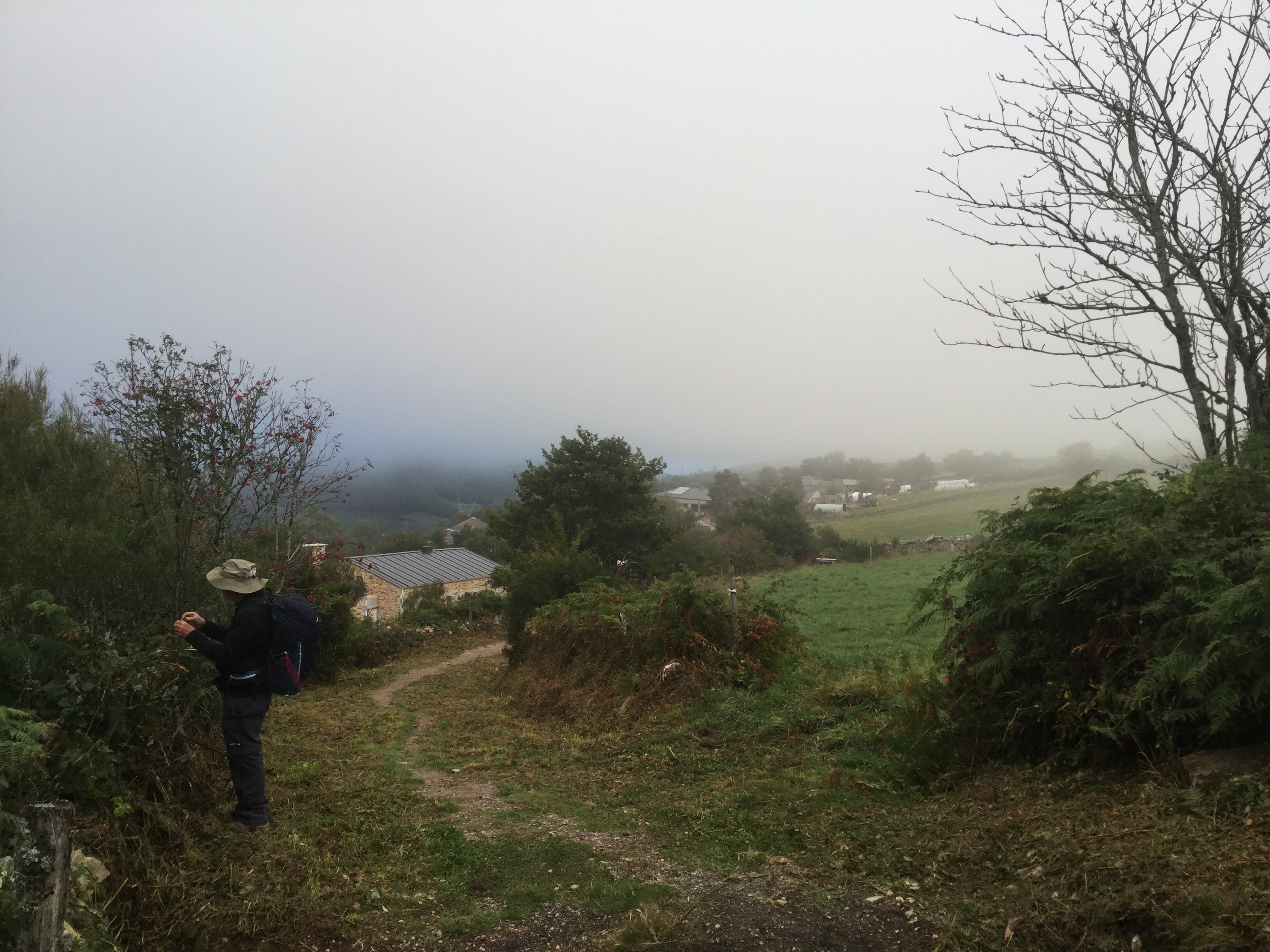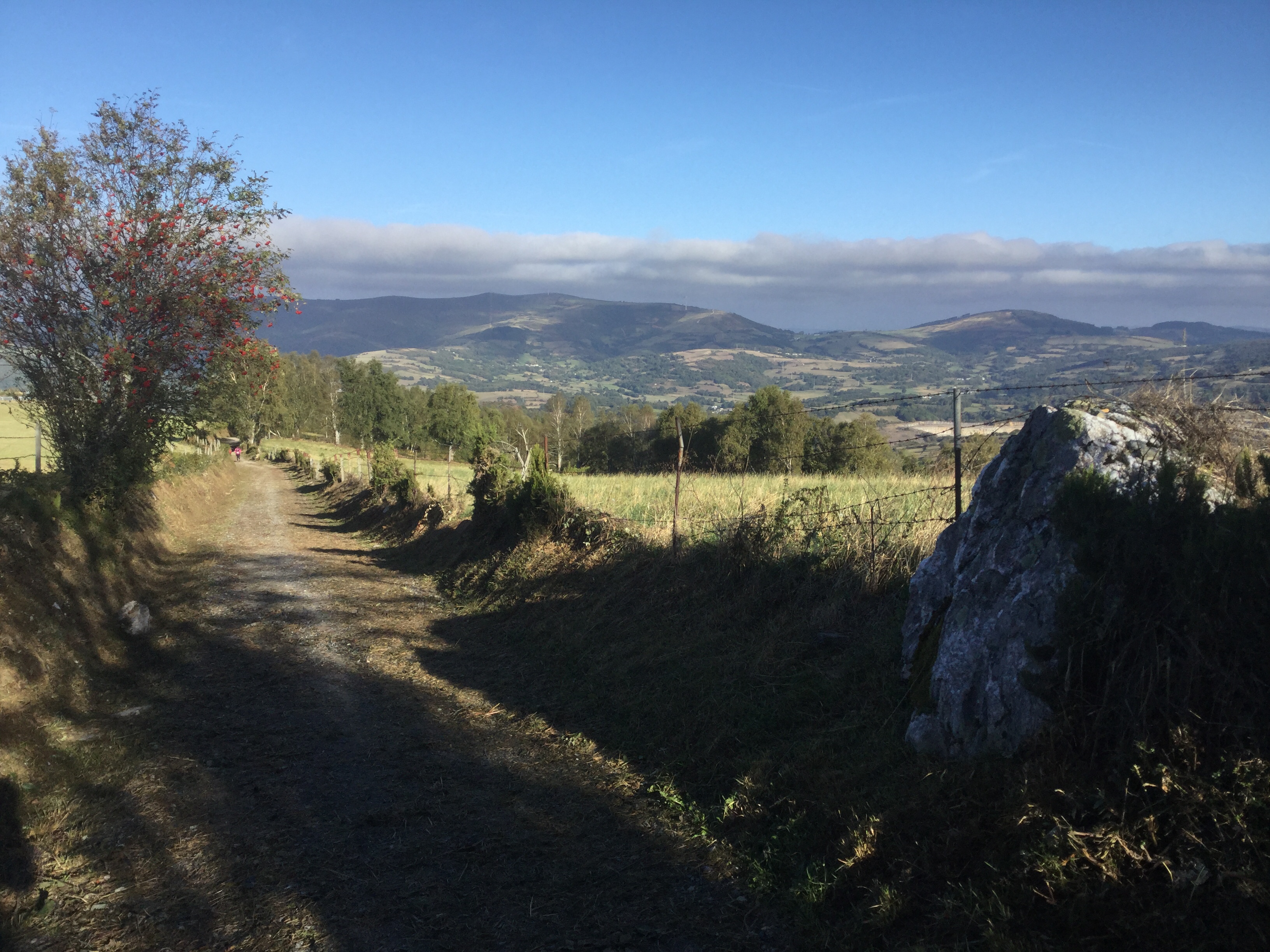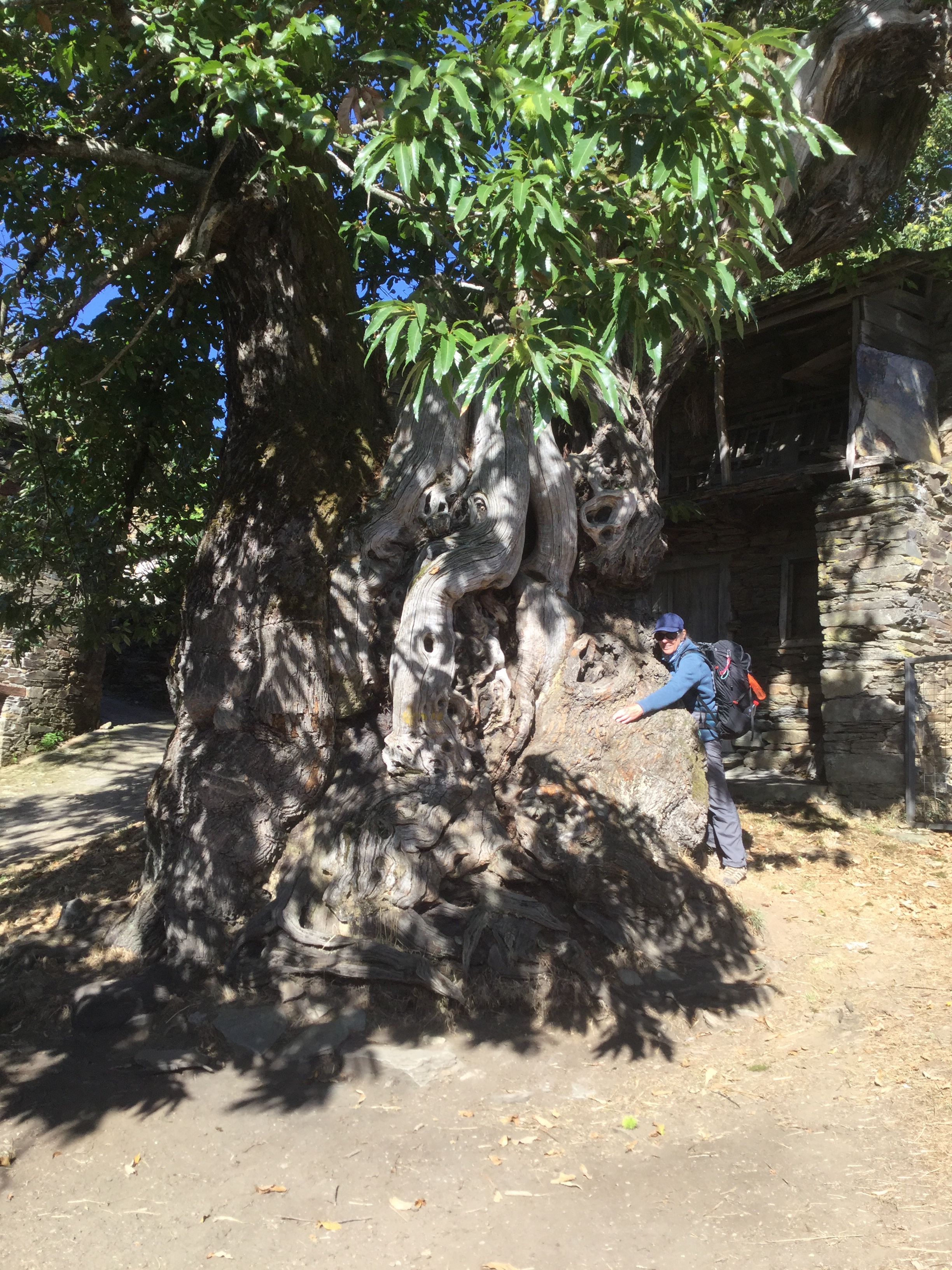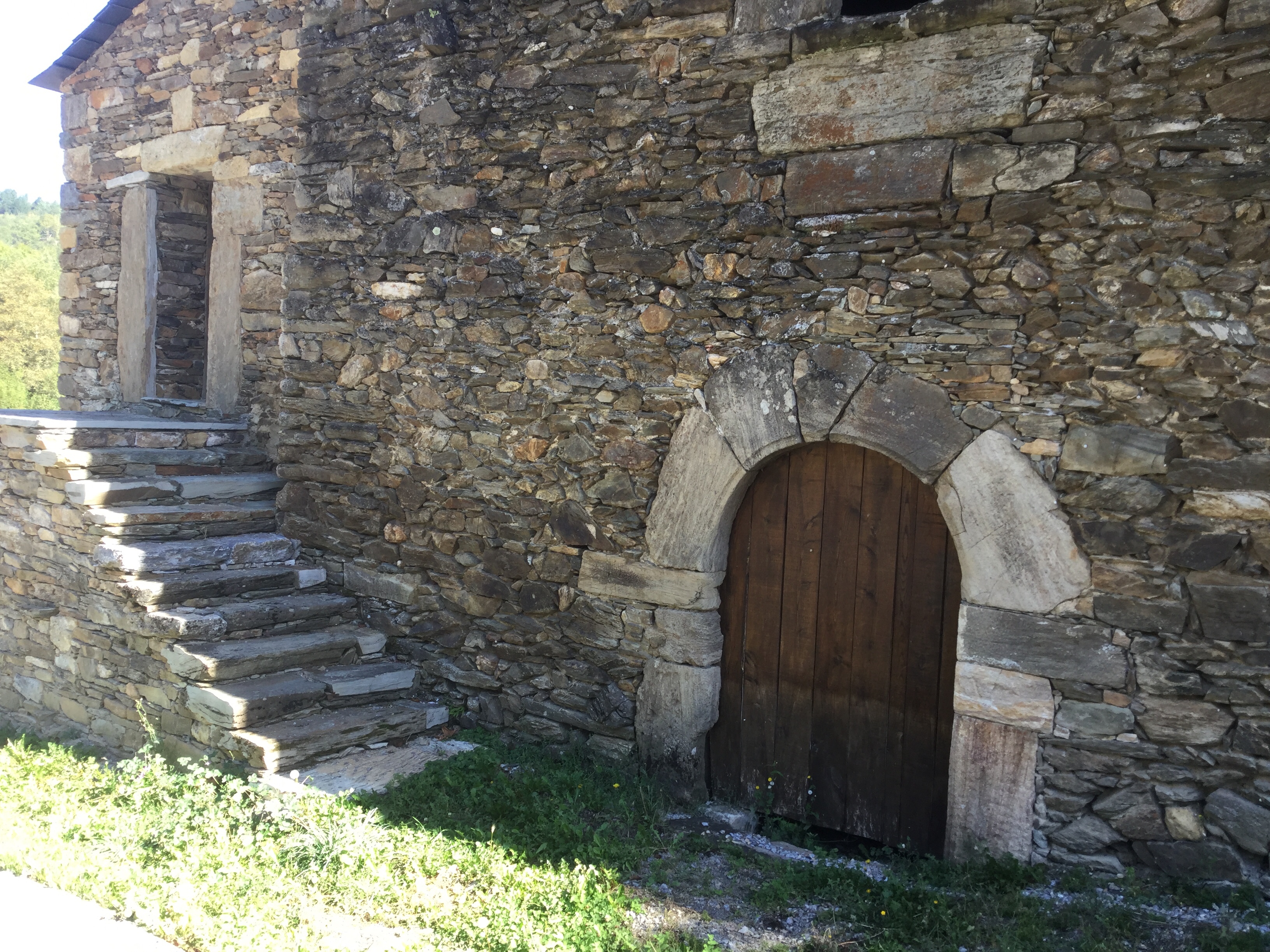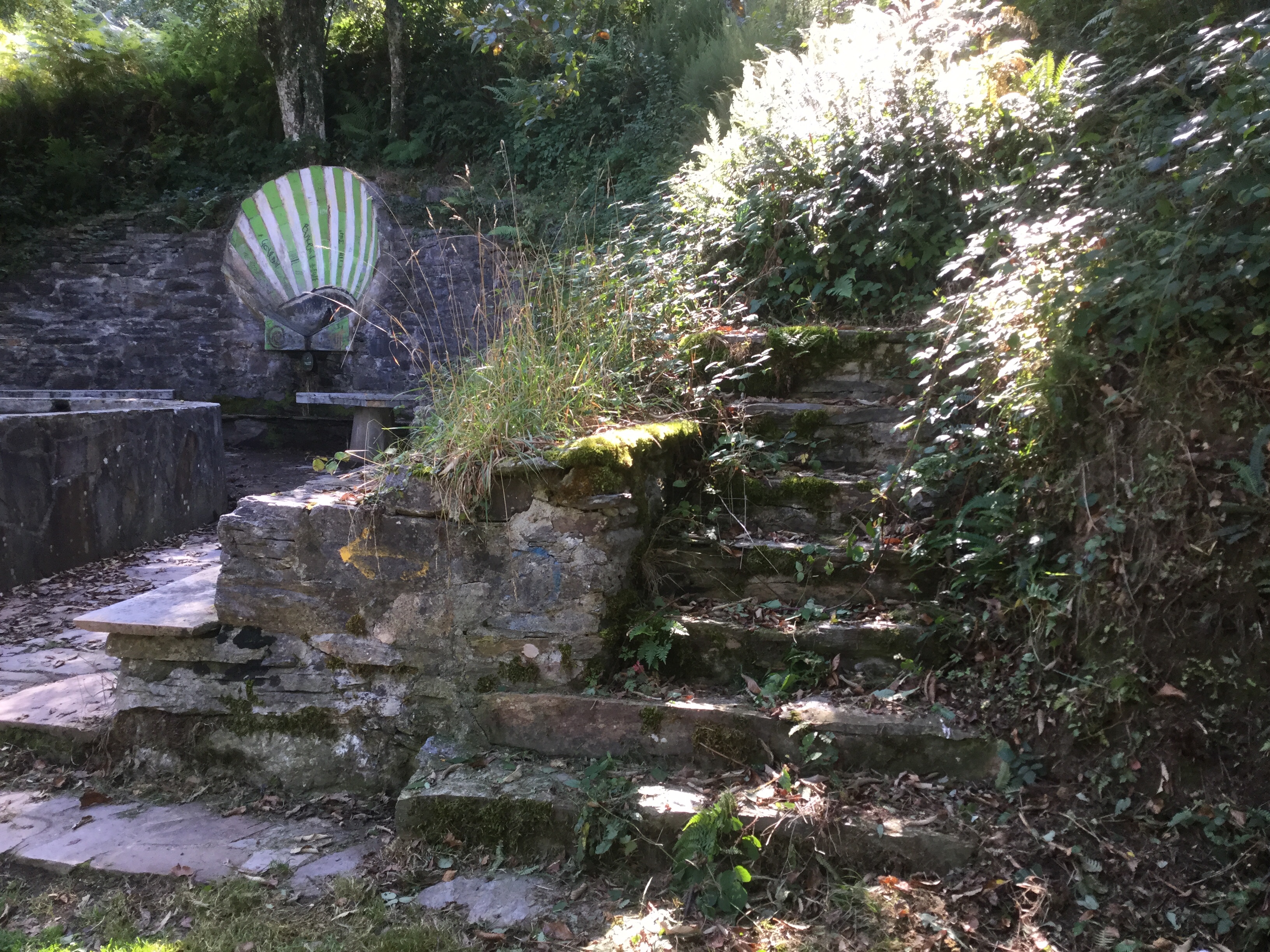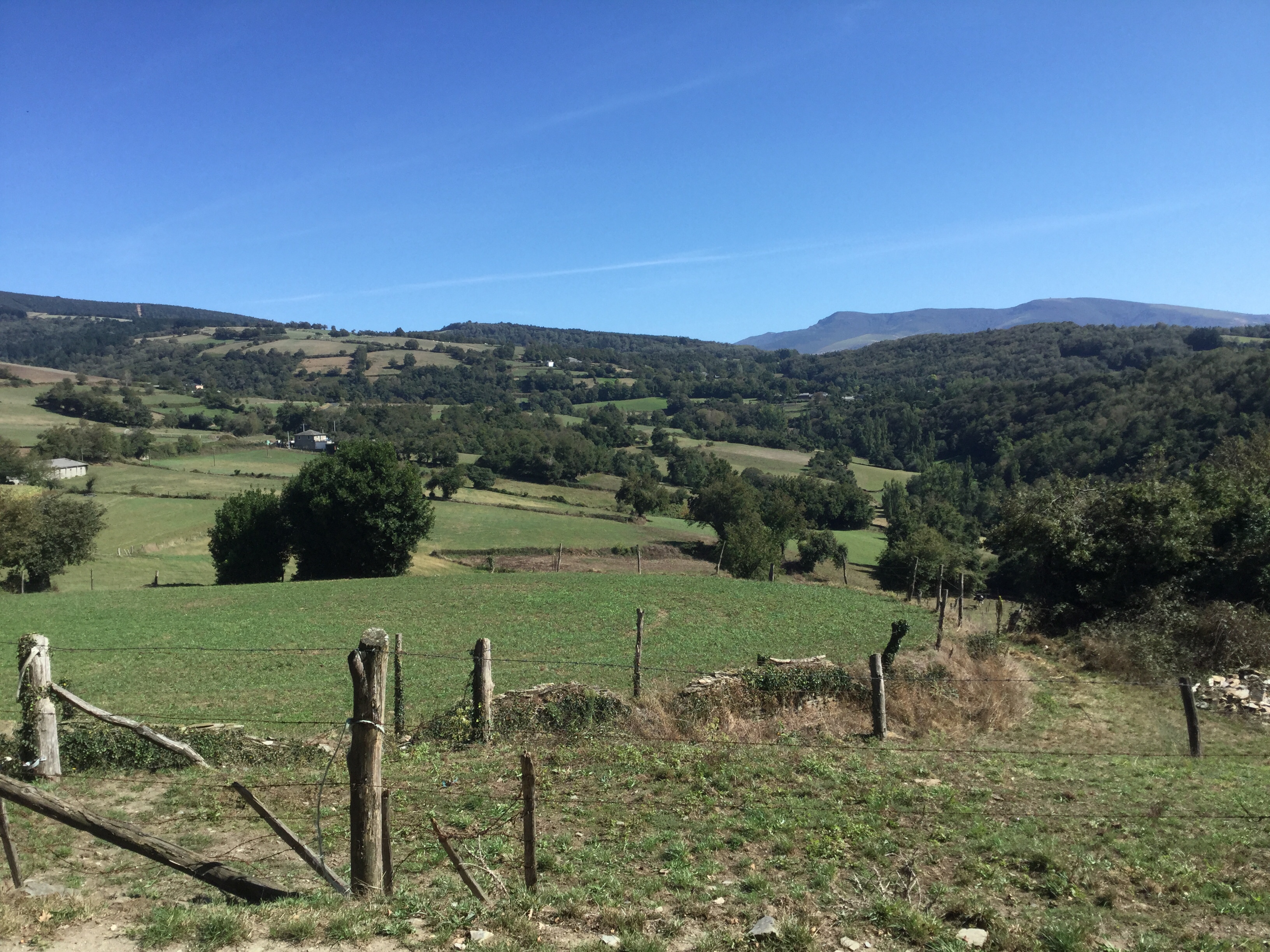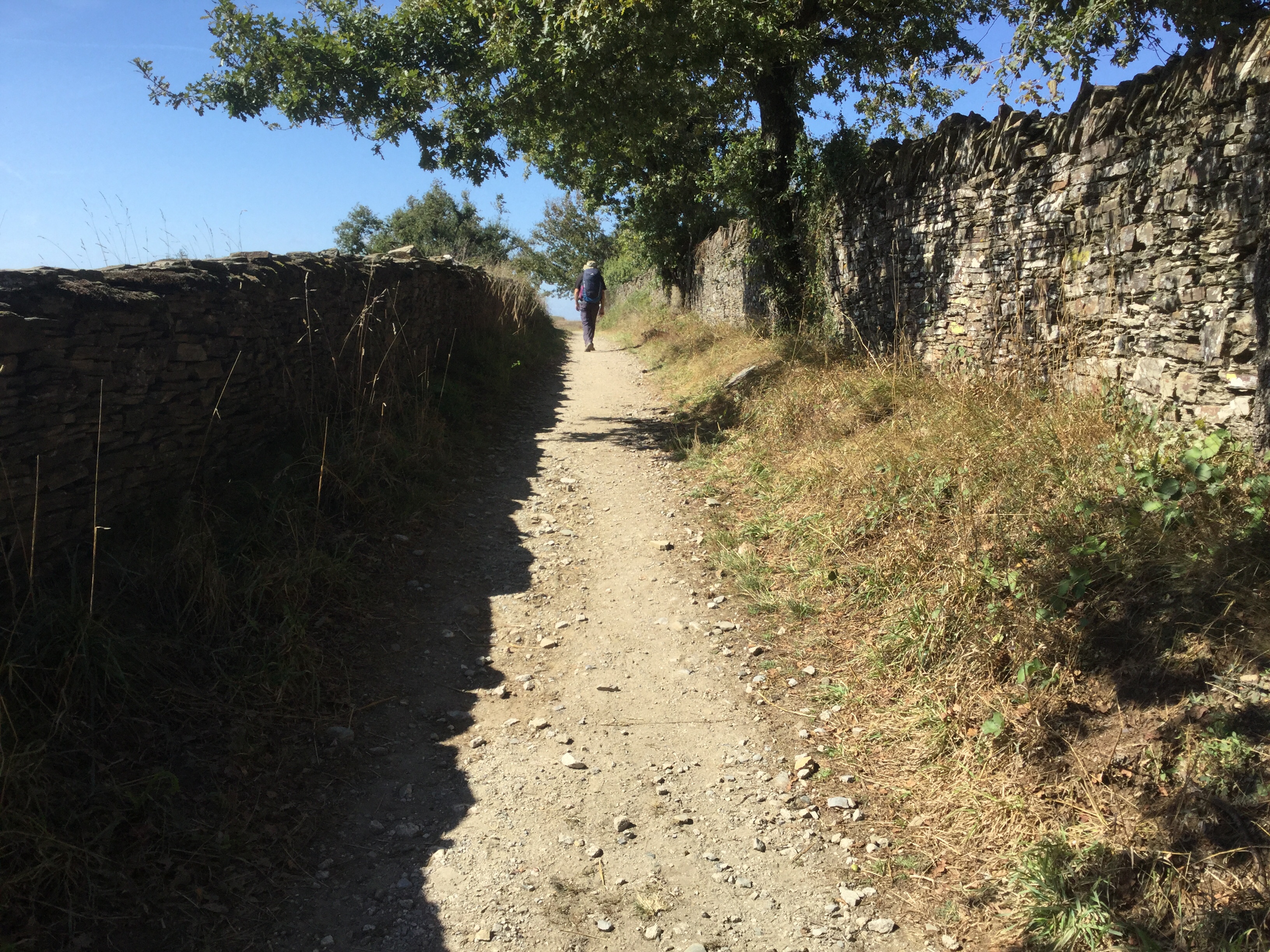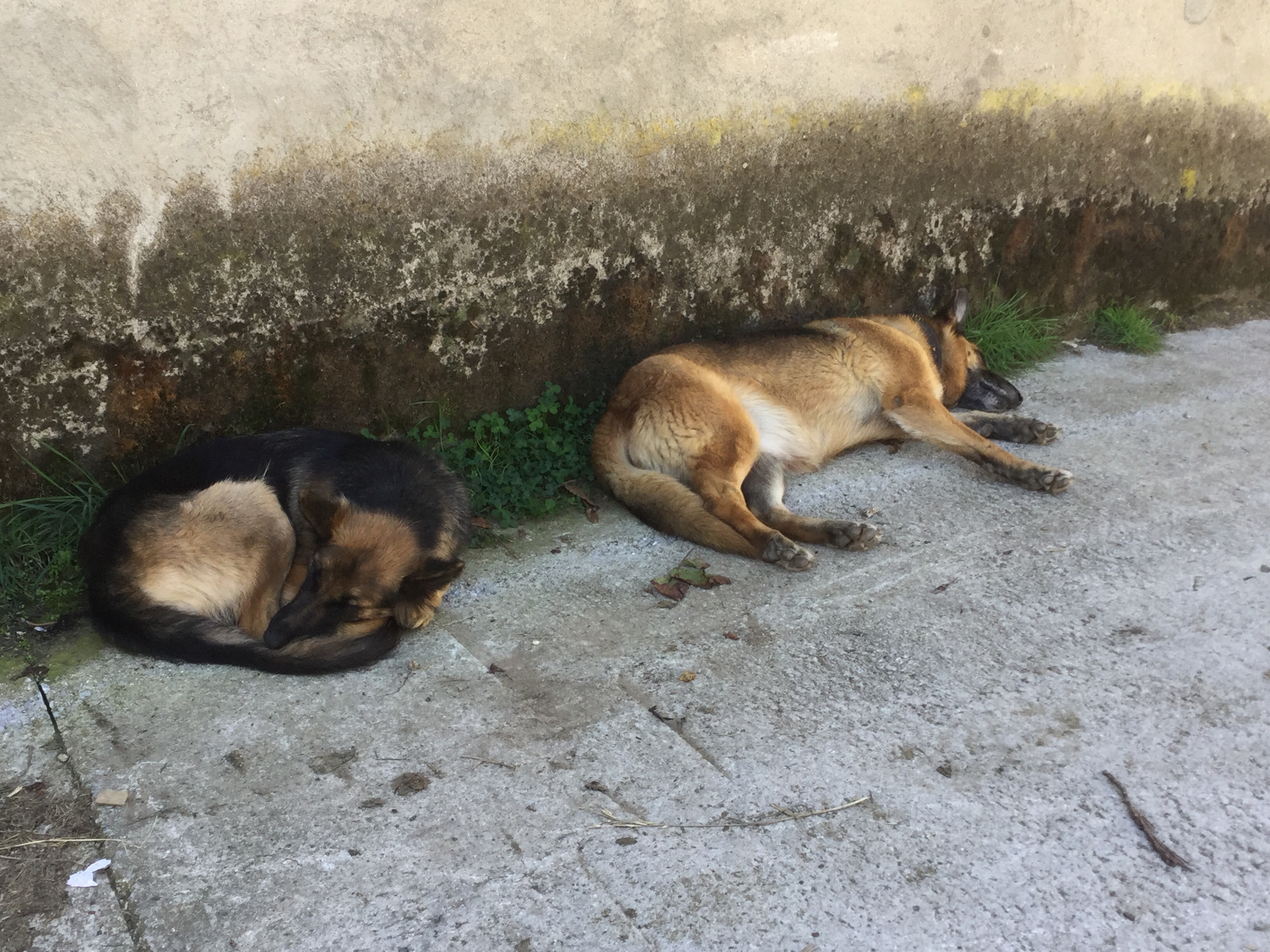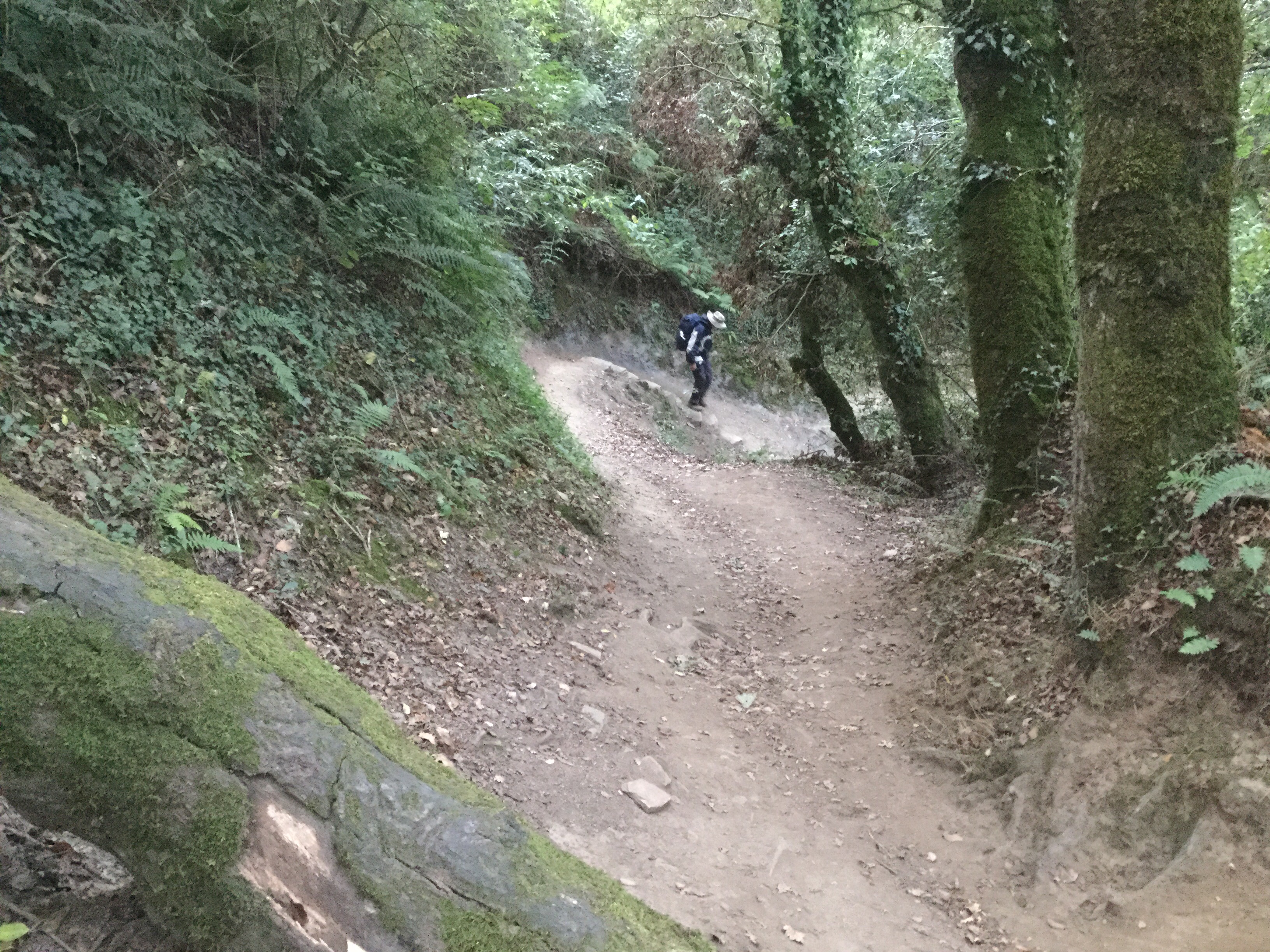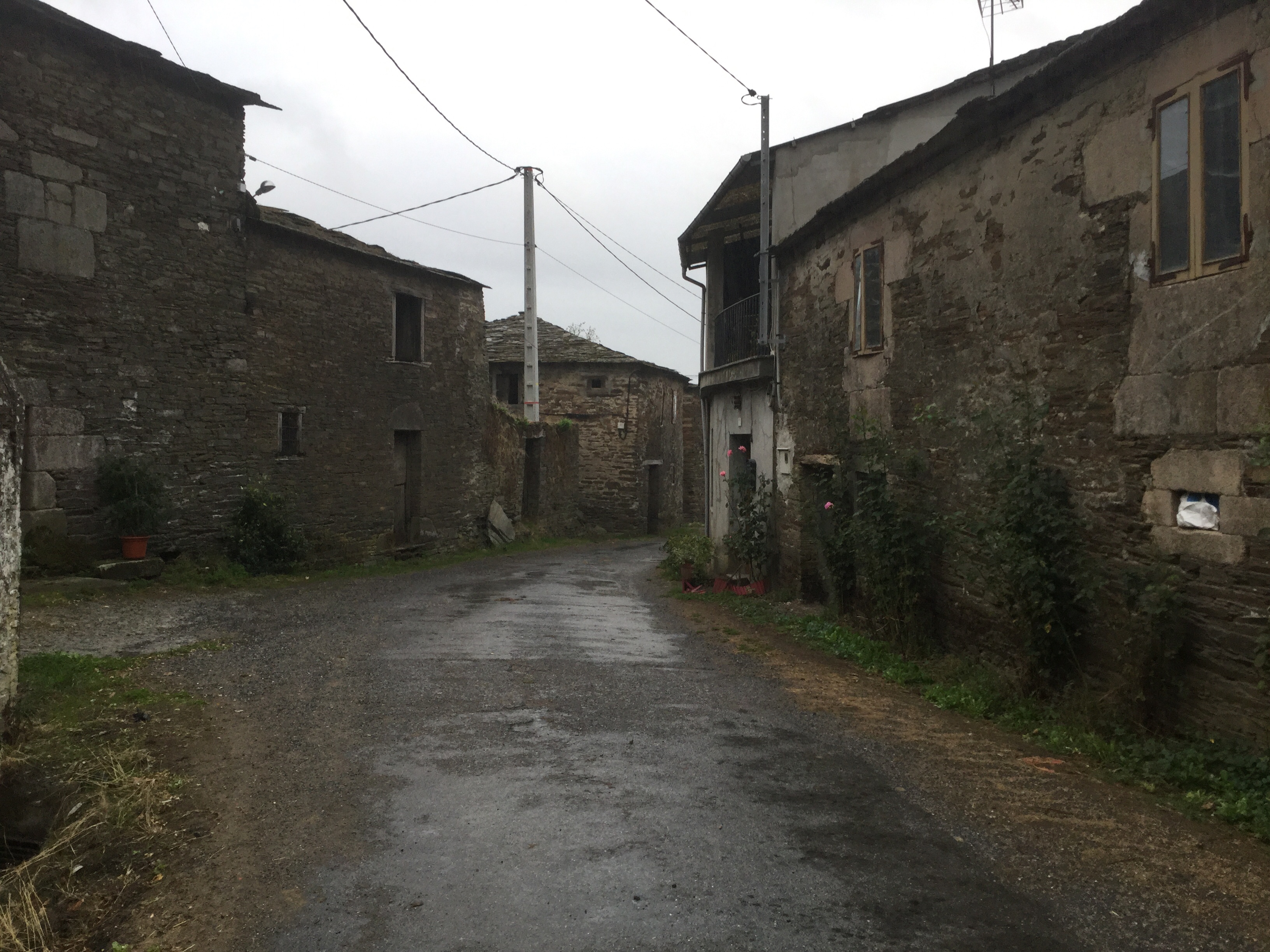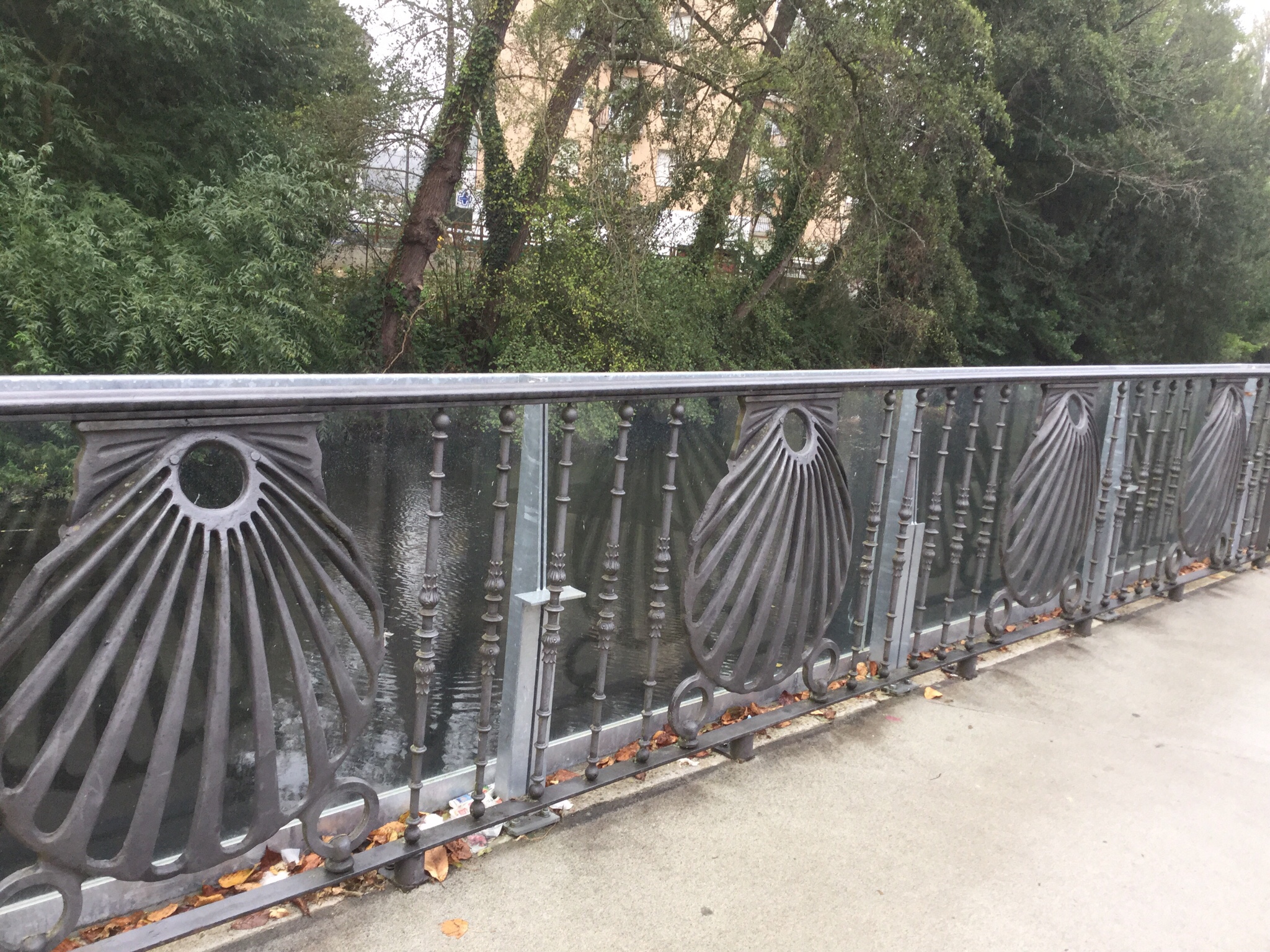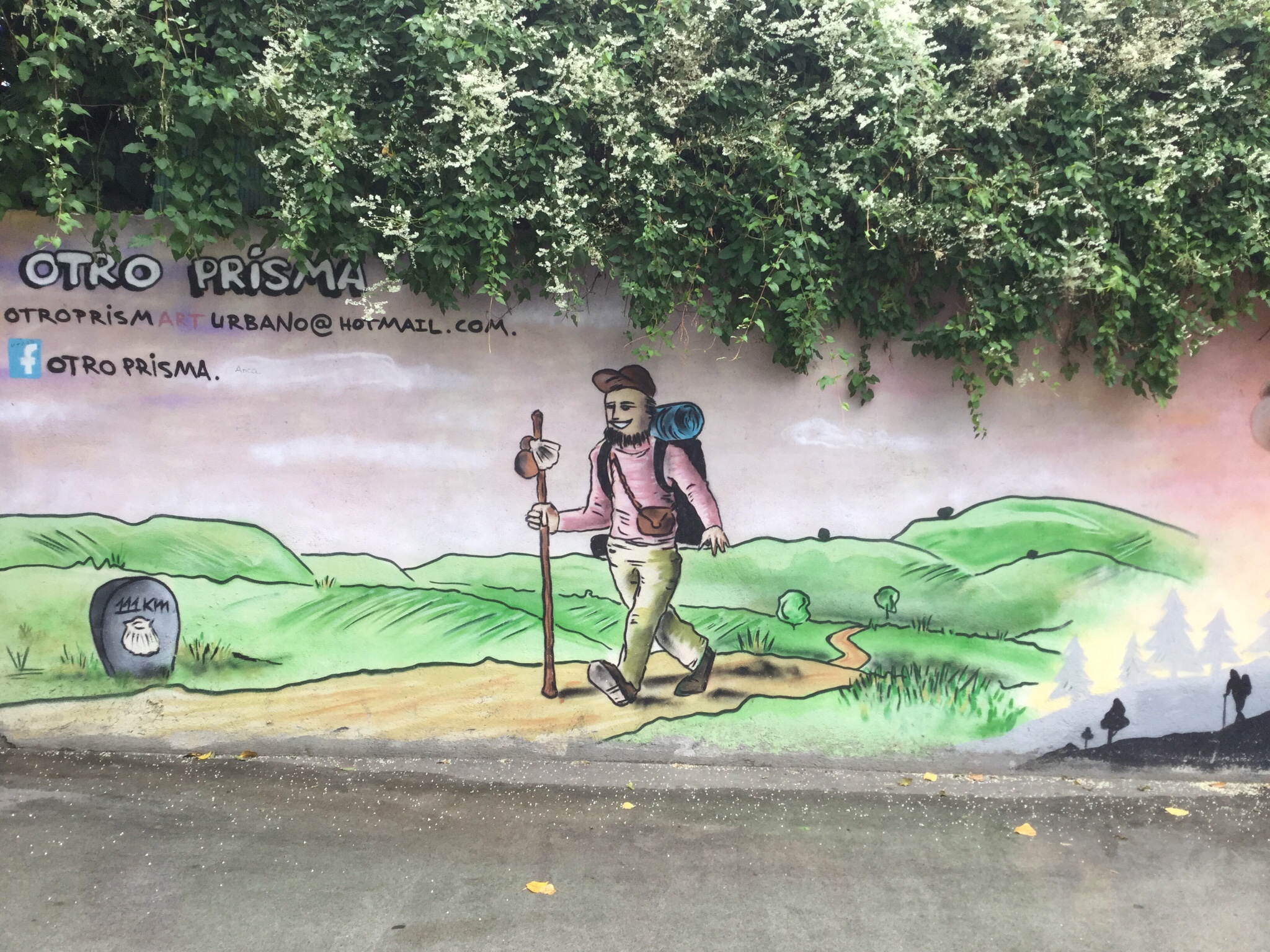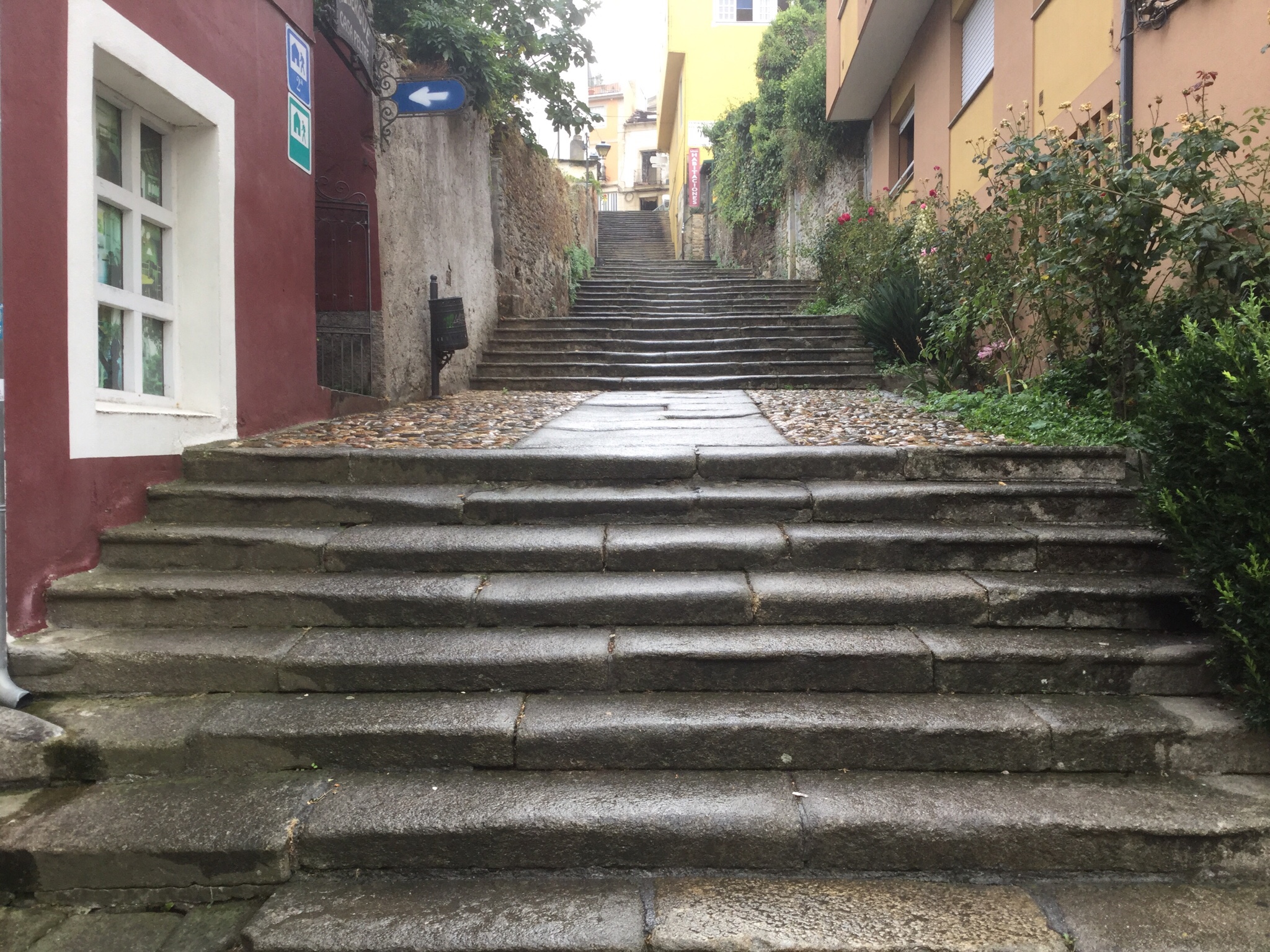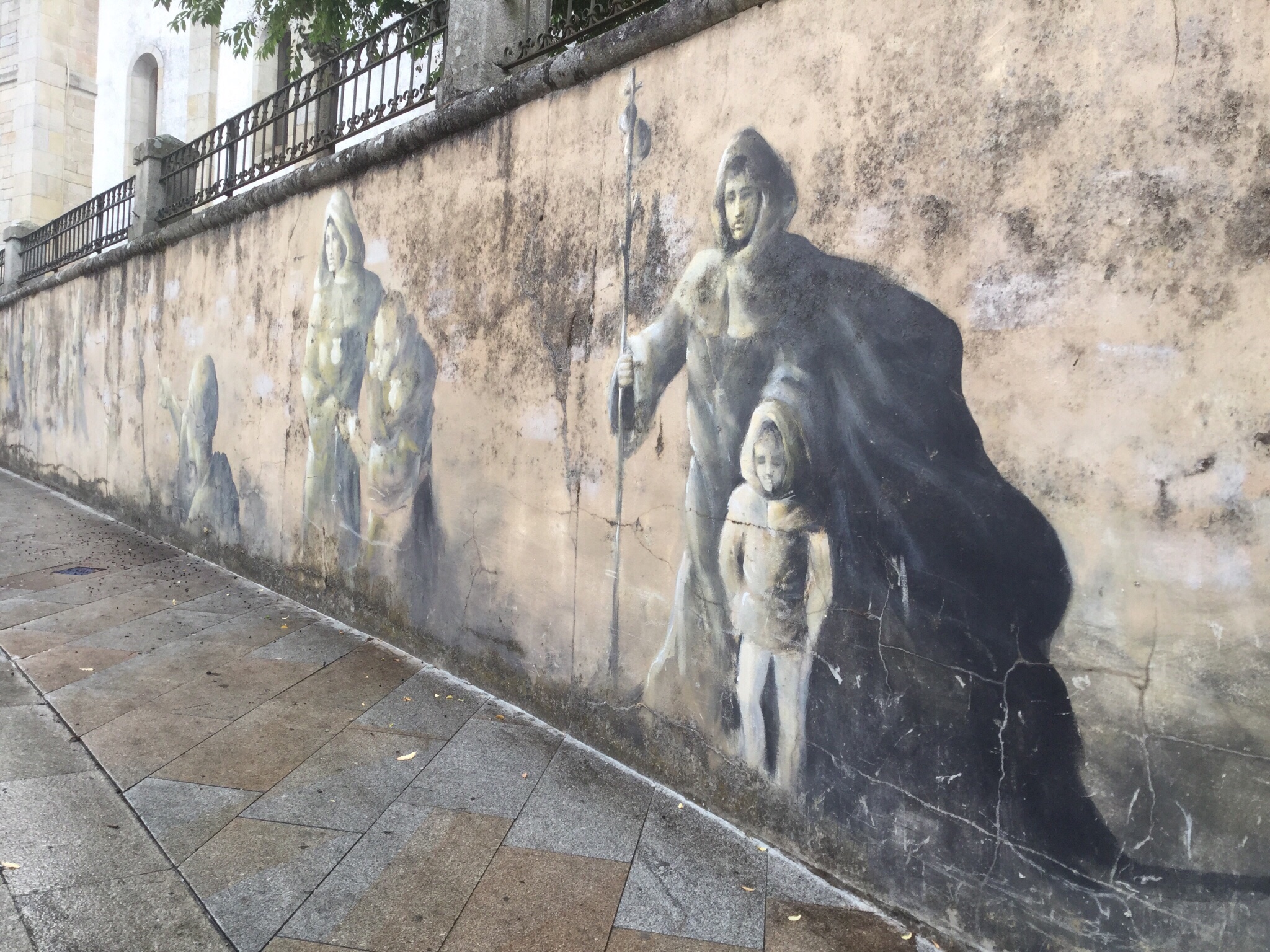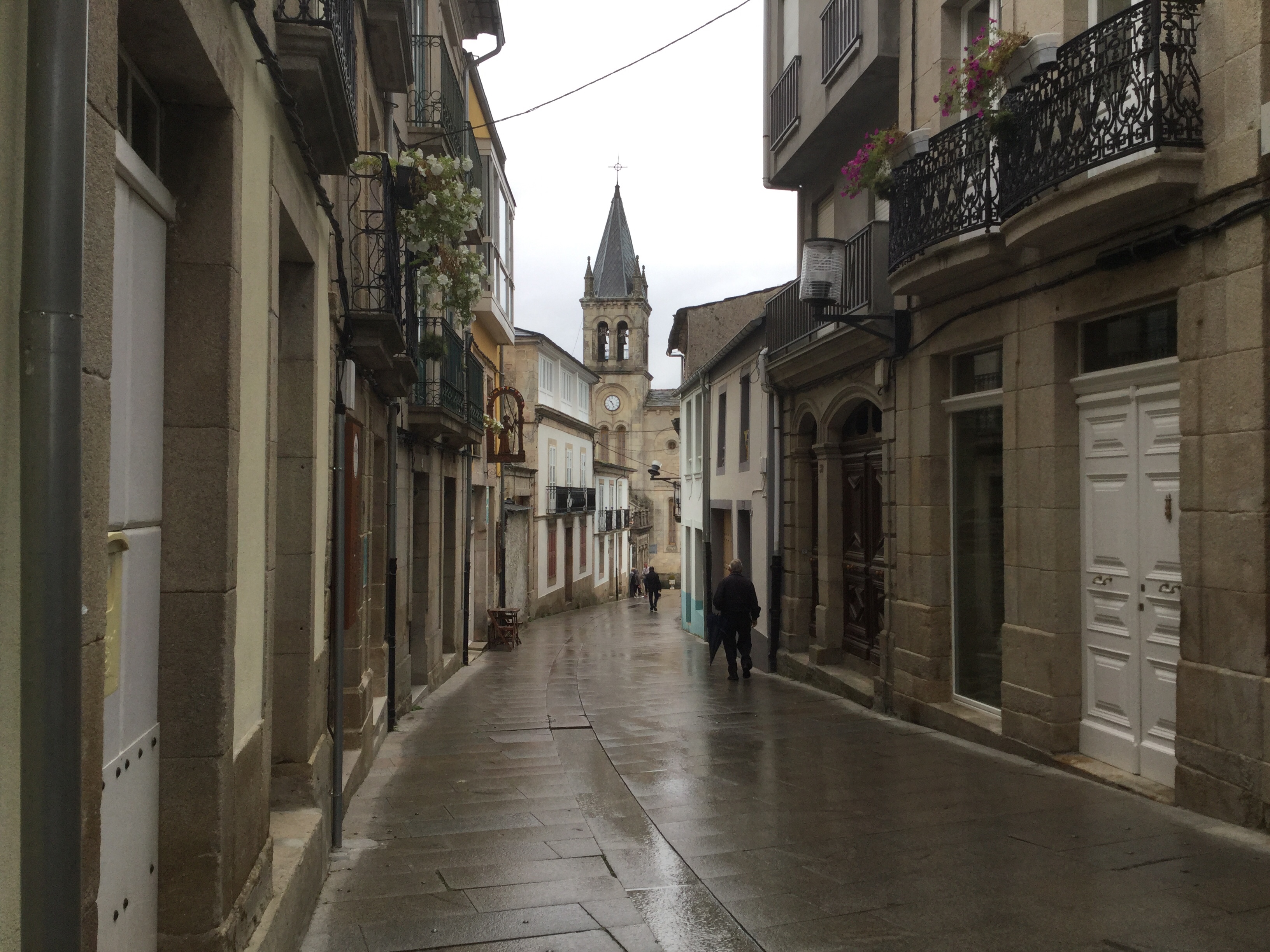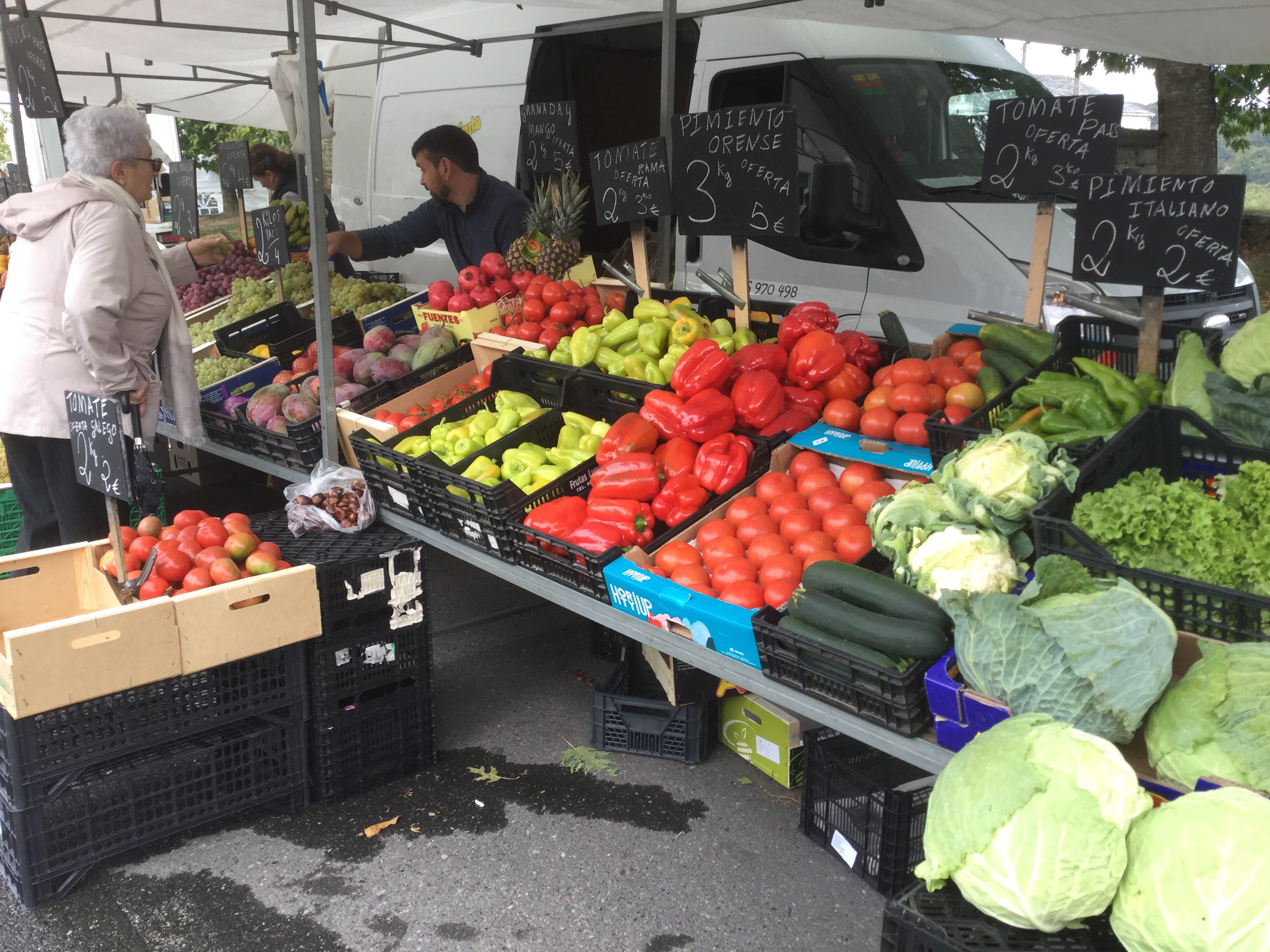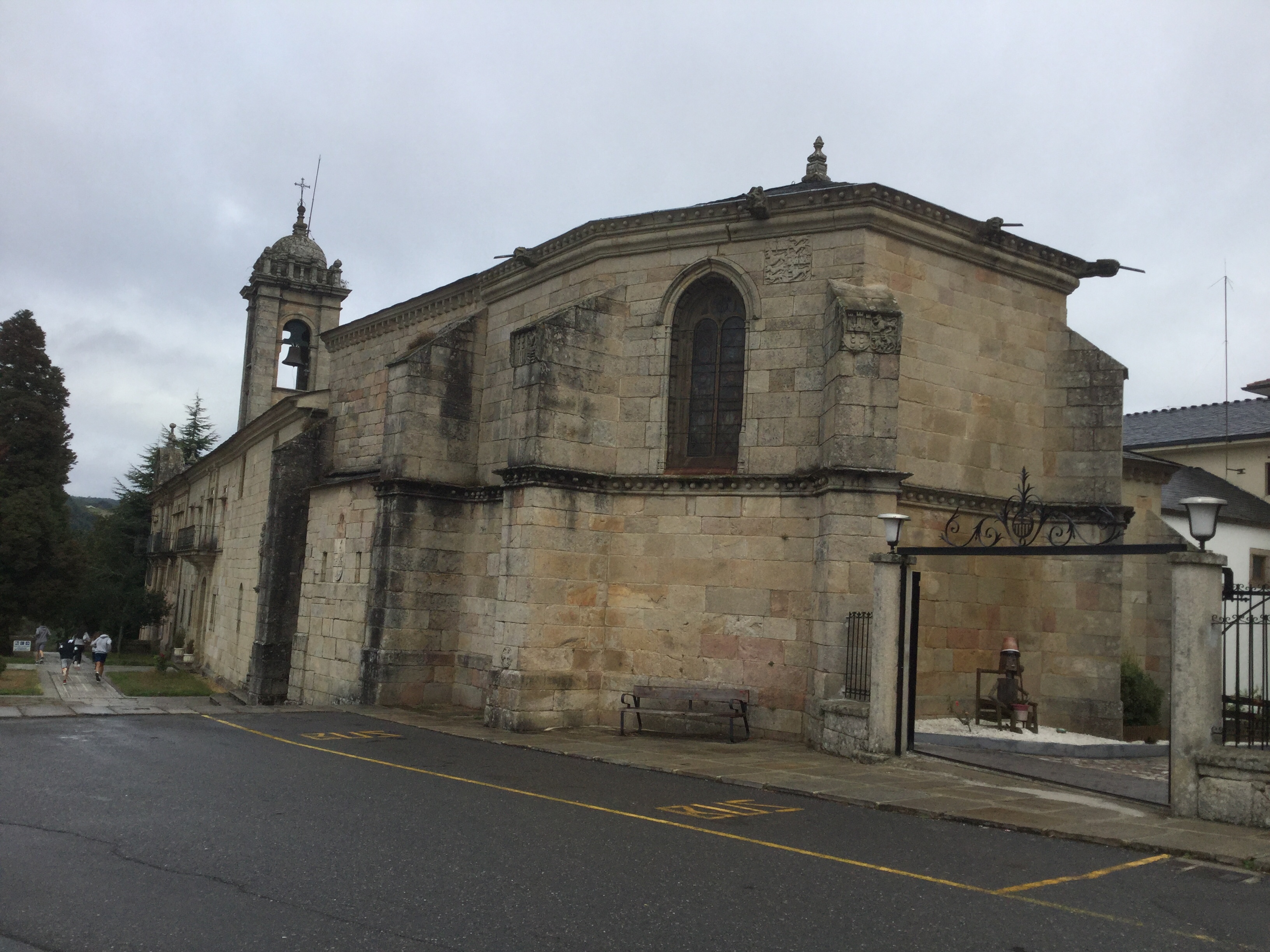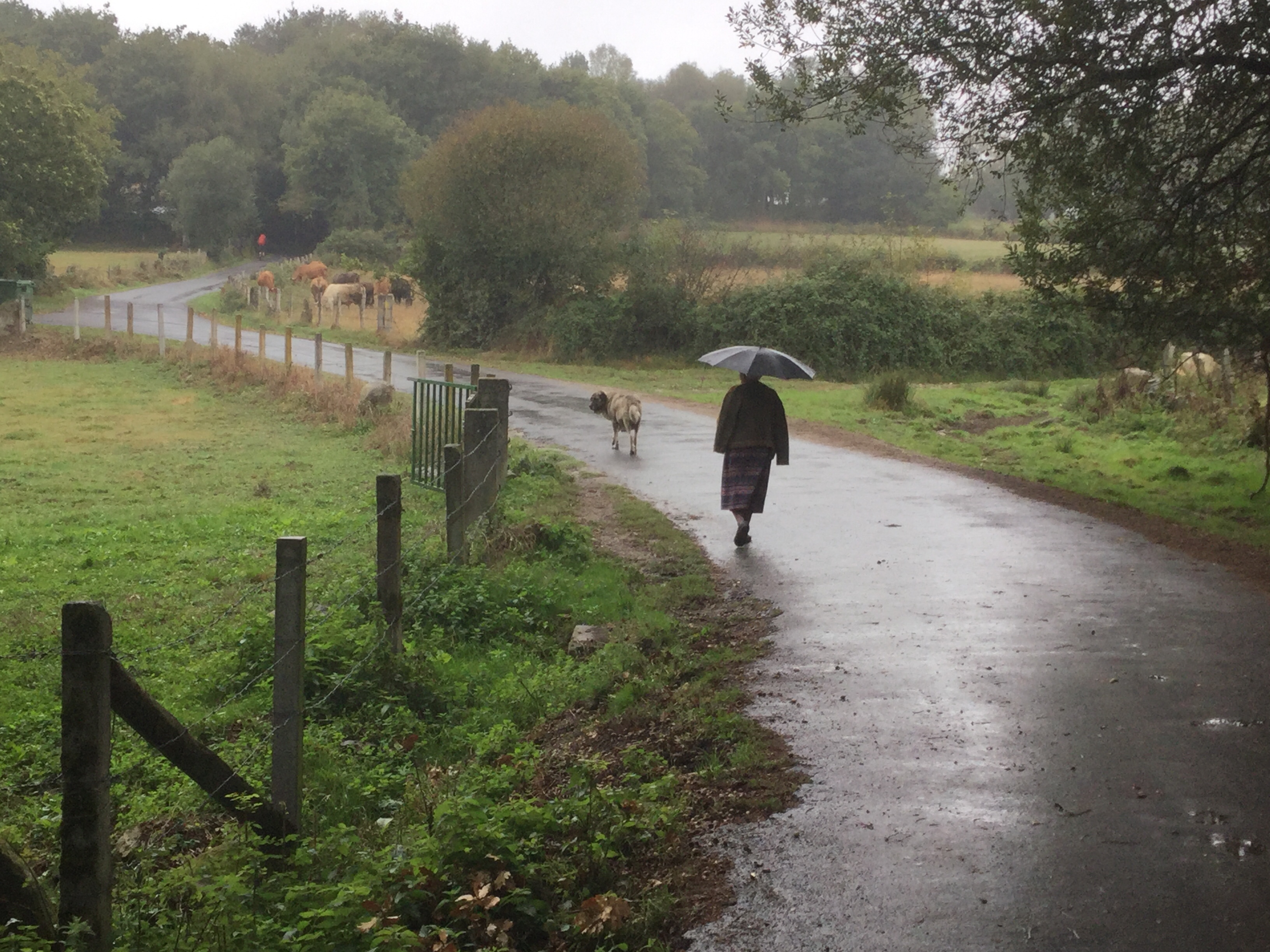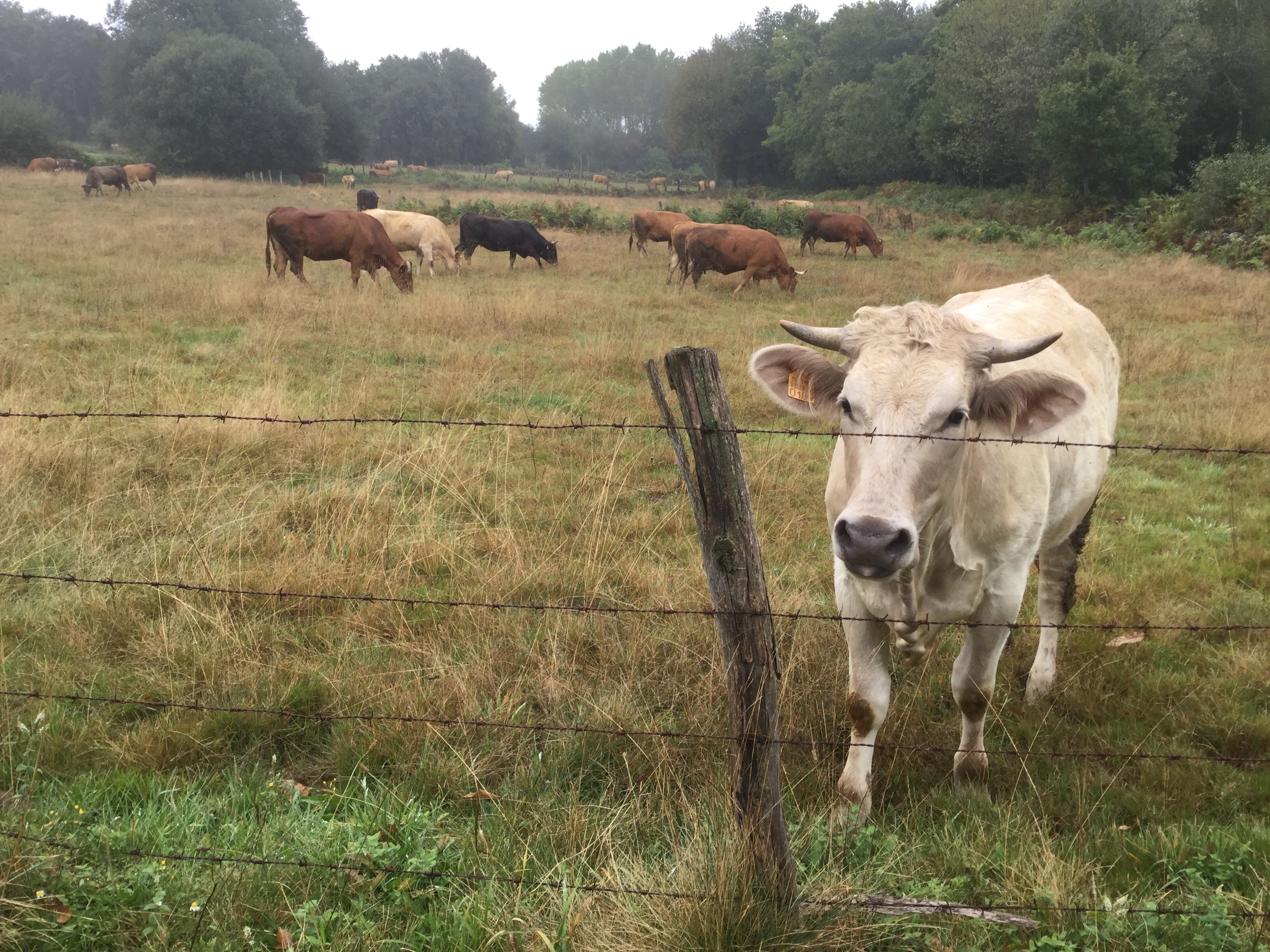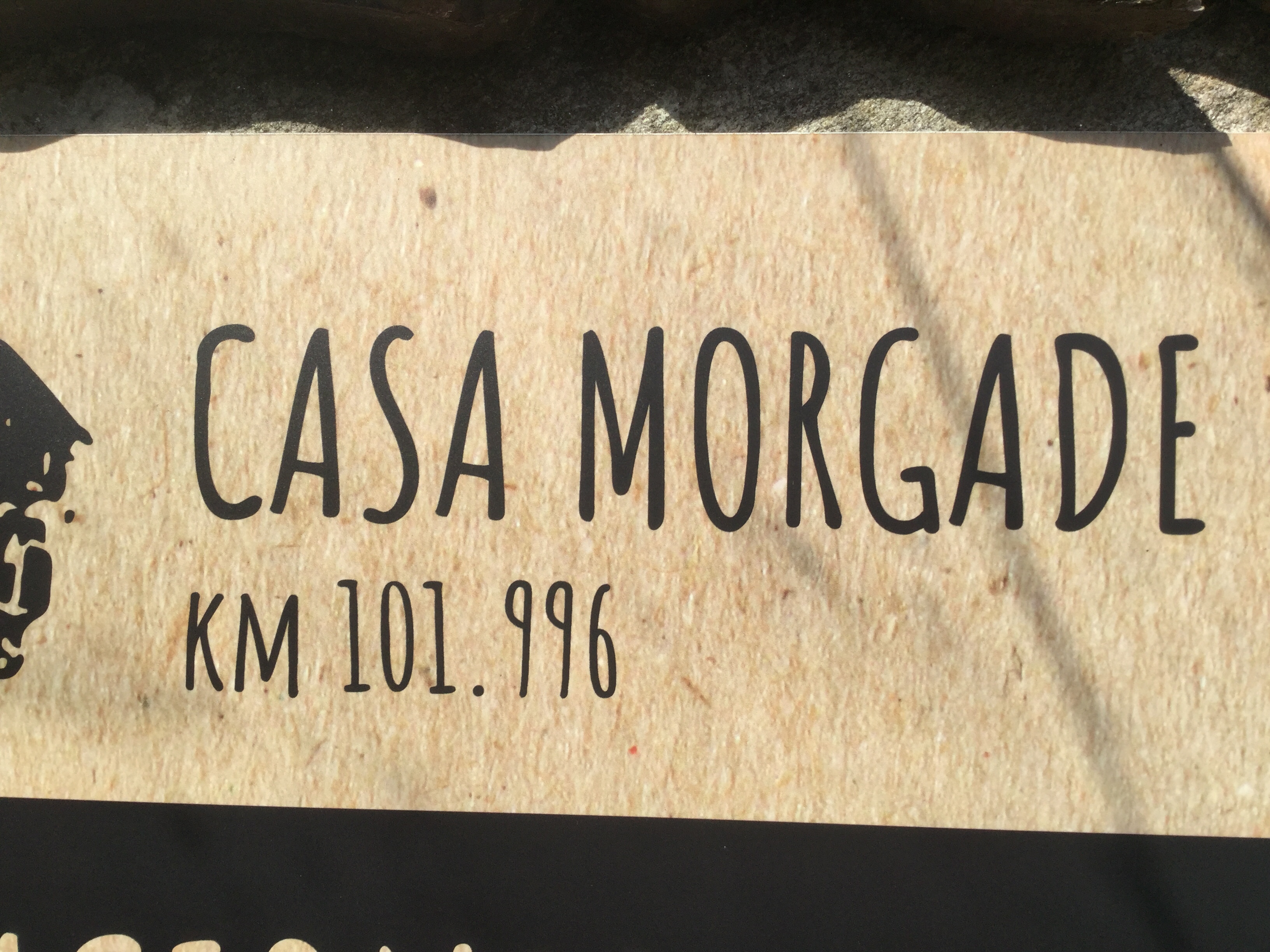Templars and Romans
We left Riego de Ambros in the dark with one head lamp between the two of us. It may not have been our wisest move. As soon as we left the town centre we were diverted onto a steep shale covered decline that really was only suitable for mountain goats, especially in the dark. As the sun slowly rose we felt a little safer and we were thankful that it was a dry morning.

The views from the goat track made it more than worthwhile and coming into Molinaseca, beautiful. The first church we encountered was the Sant Nuestra Senora de las Angustias. It has been given steel doors because of an age old tradition. Pilgrims and Galician harvesters on their way home from Castilla would take a splinter from the churches door and leave their sickles as a token to the virgin. And because of this there was a need to protect the temples doors.
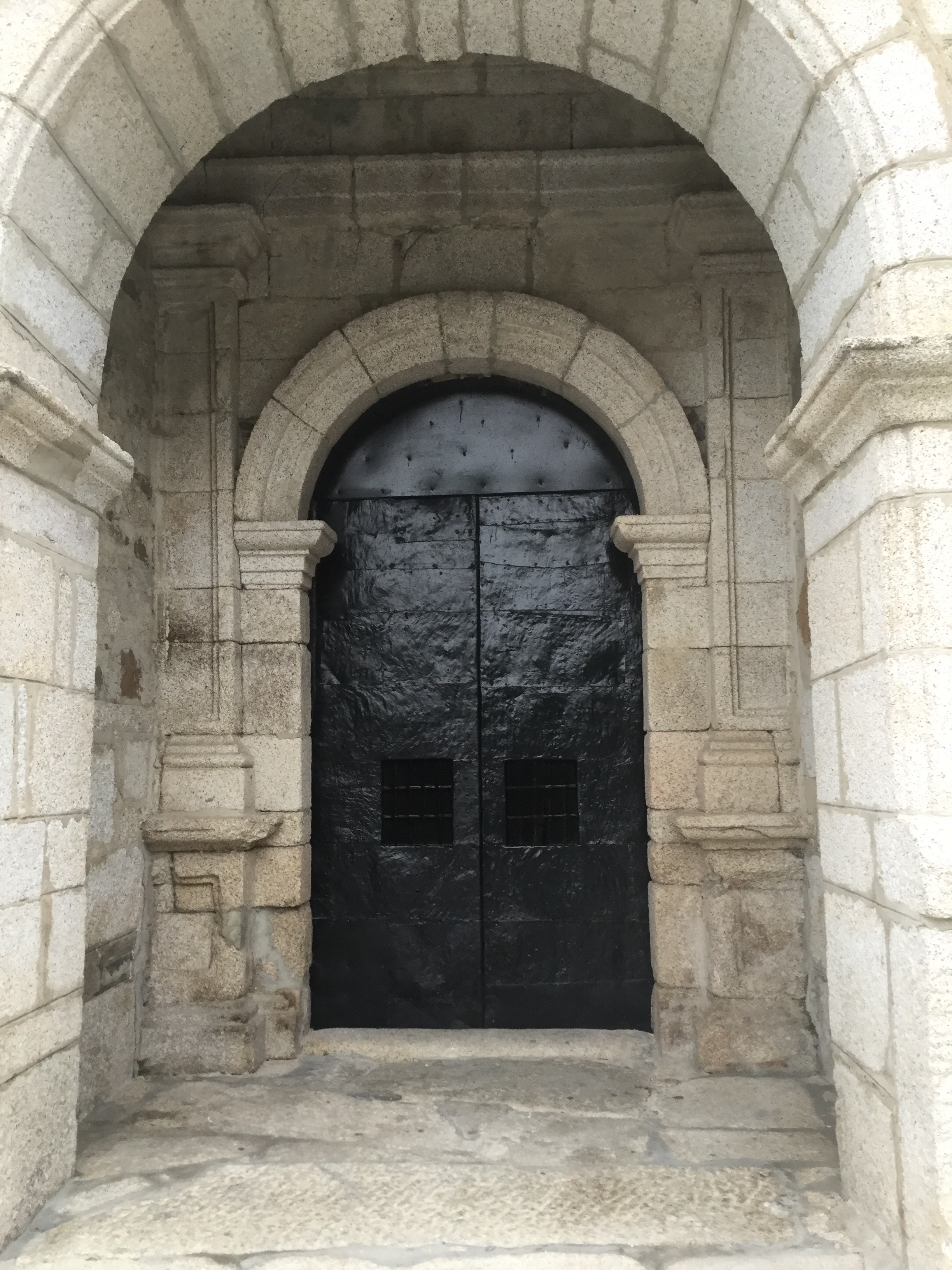
We cross Rio Meruelo on the pilgrims bridge.
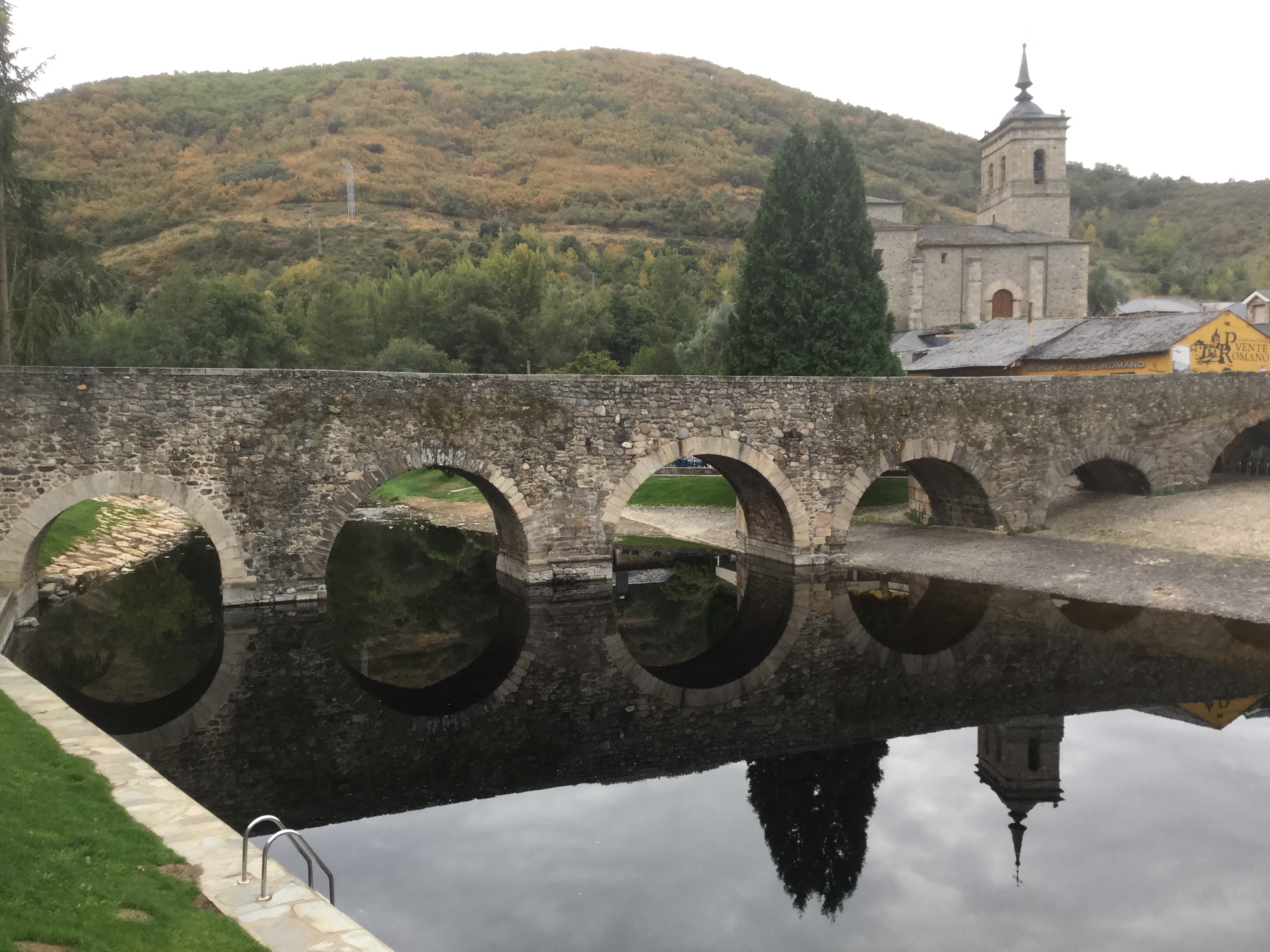
through to the old stone cross known as Saint Christ Cross on Calle Real -royal street- which is the most important street in Molinaseca.
As we walked down Calle Real a woman roasting peppers which is one of several traditions of the area.
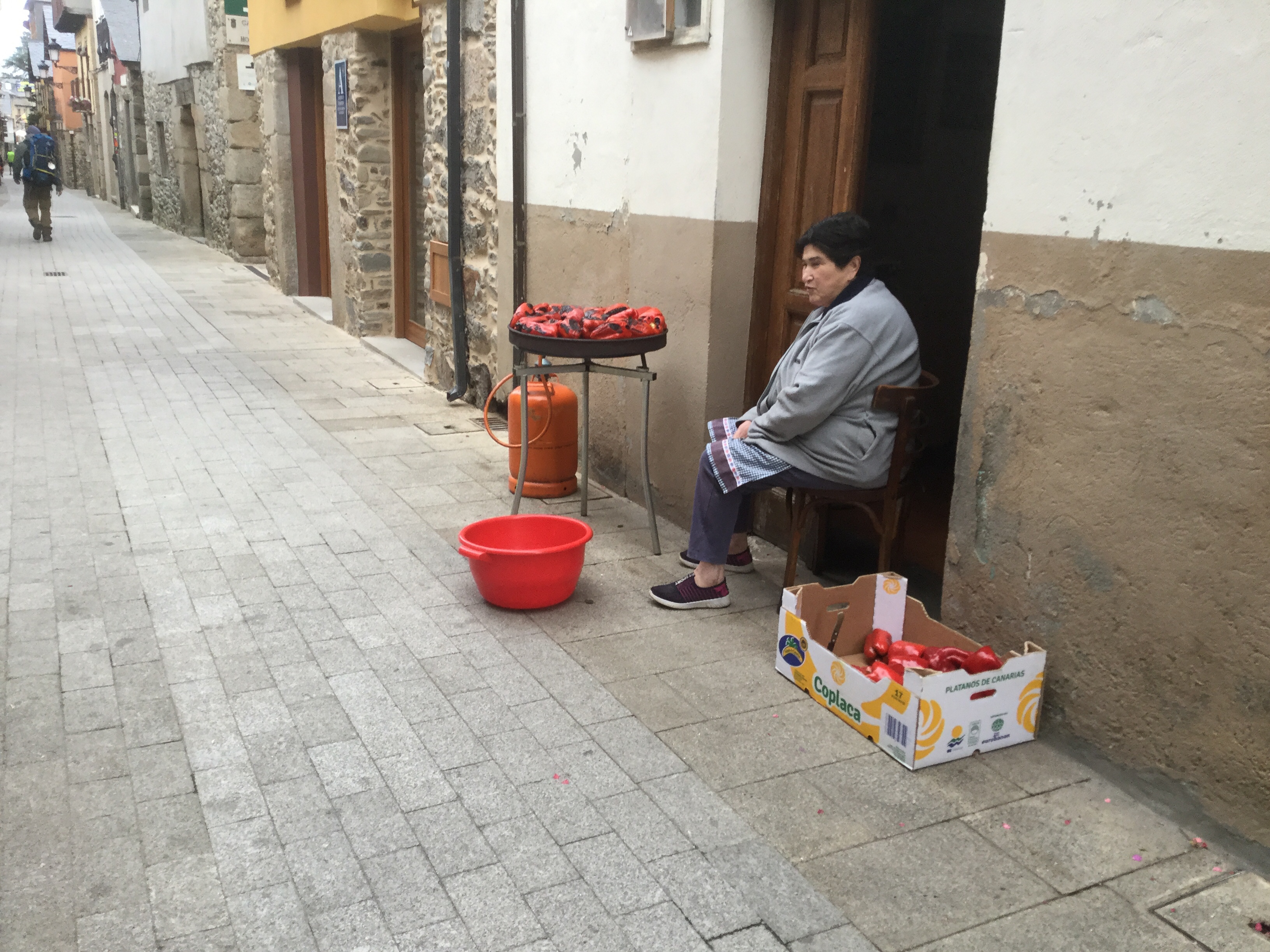
The old Stone Cross at the end of Calle Real.
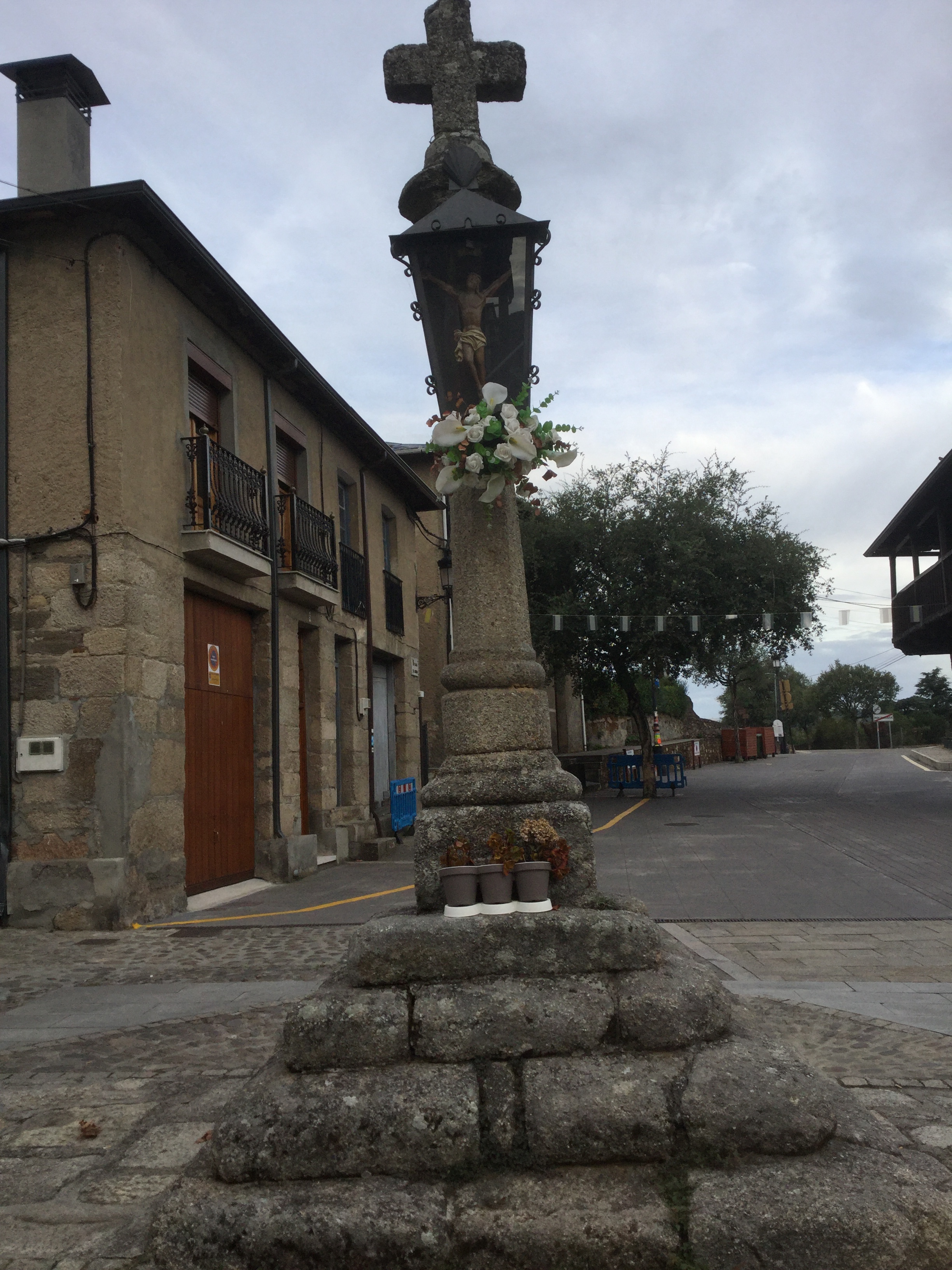
Leaving Molinaseca a monument with a difference.
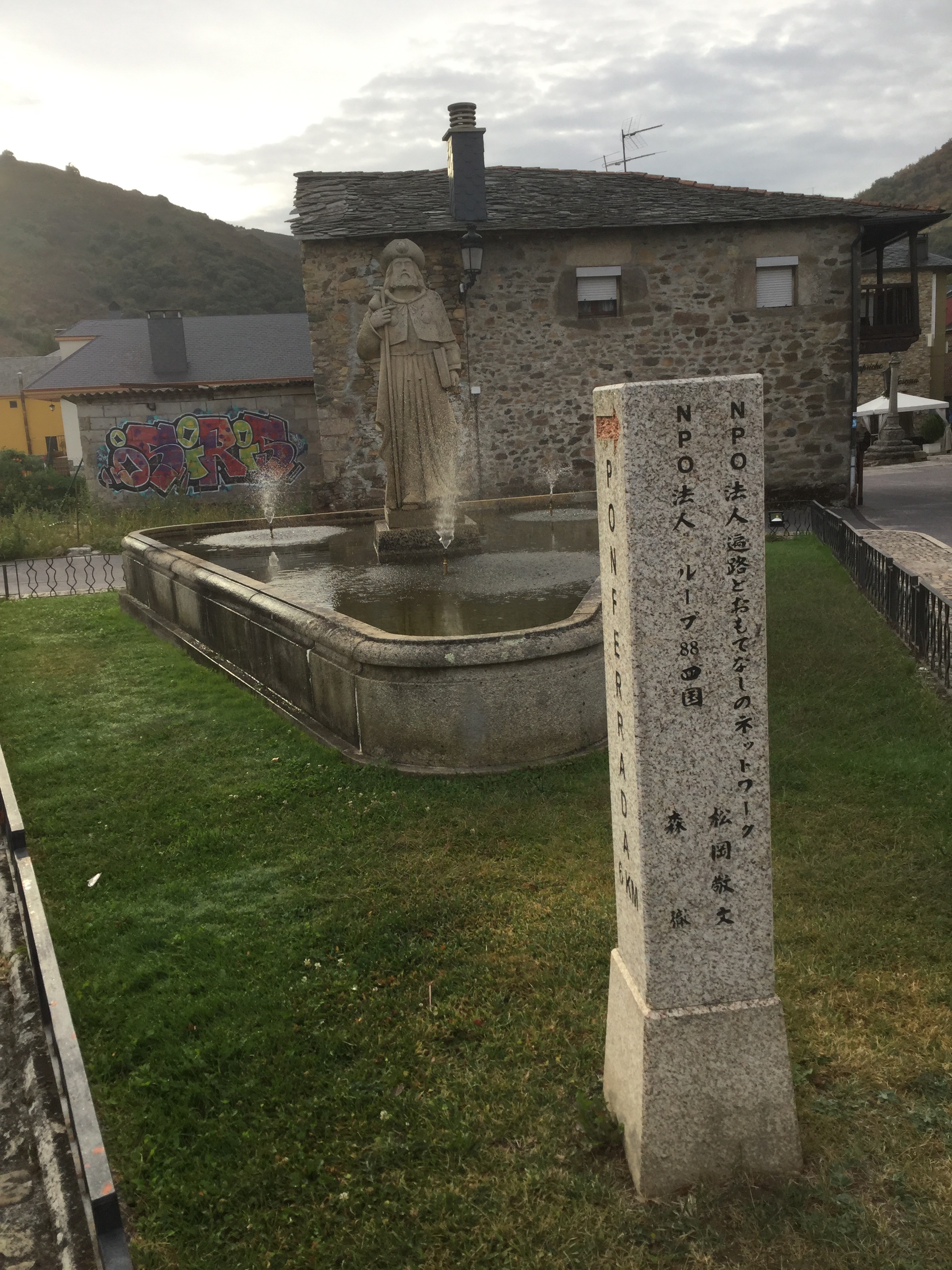
Before arriving at Ponferrada a sign to a Roman Fountain. I took the detour and even though there was no sign to say it was the Fuente Romana, I think this must be it.
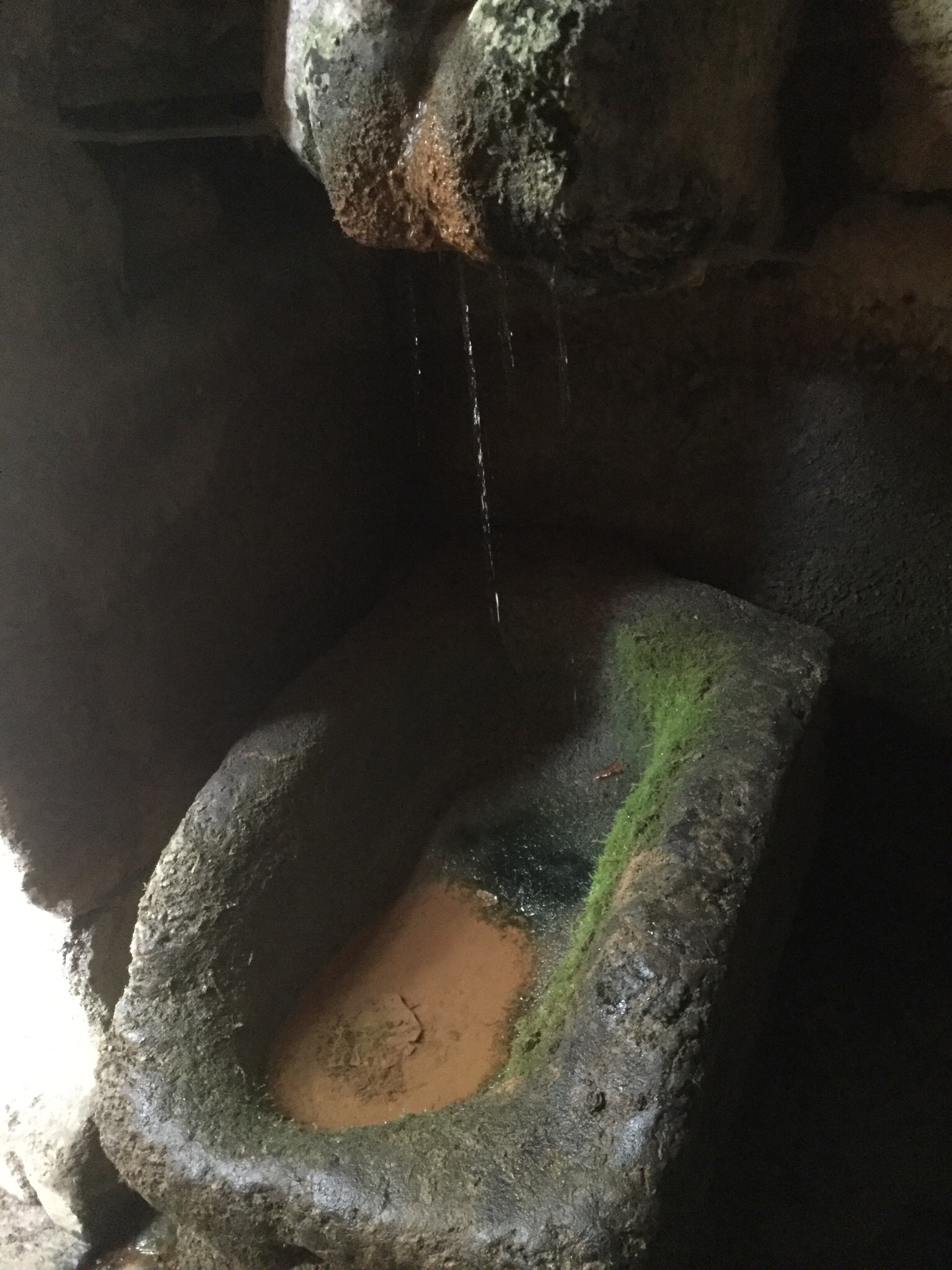
More beautiful towns and old buildings. Here a local stopped to talk to us. His English was as good as my Spanish. From what I understood he was inviting us to his Casa. He was a lovely man but we declined and walked on.
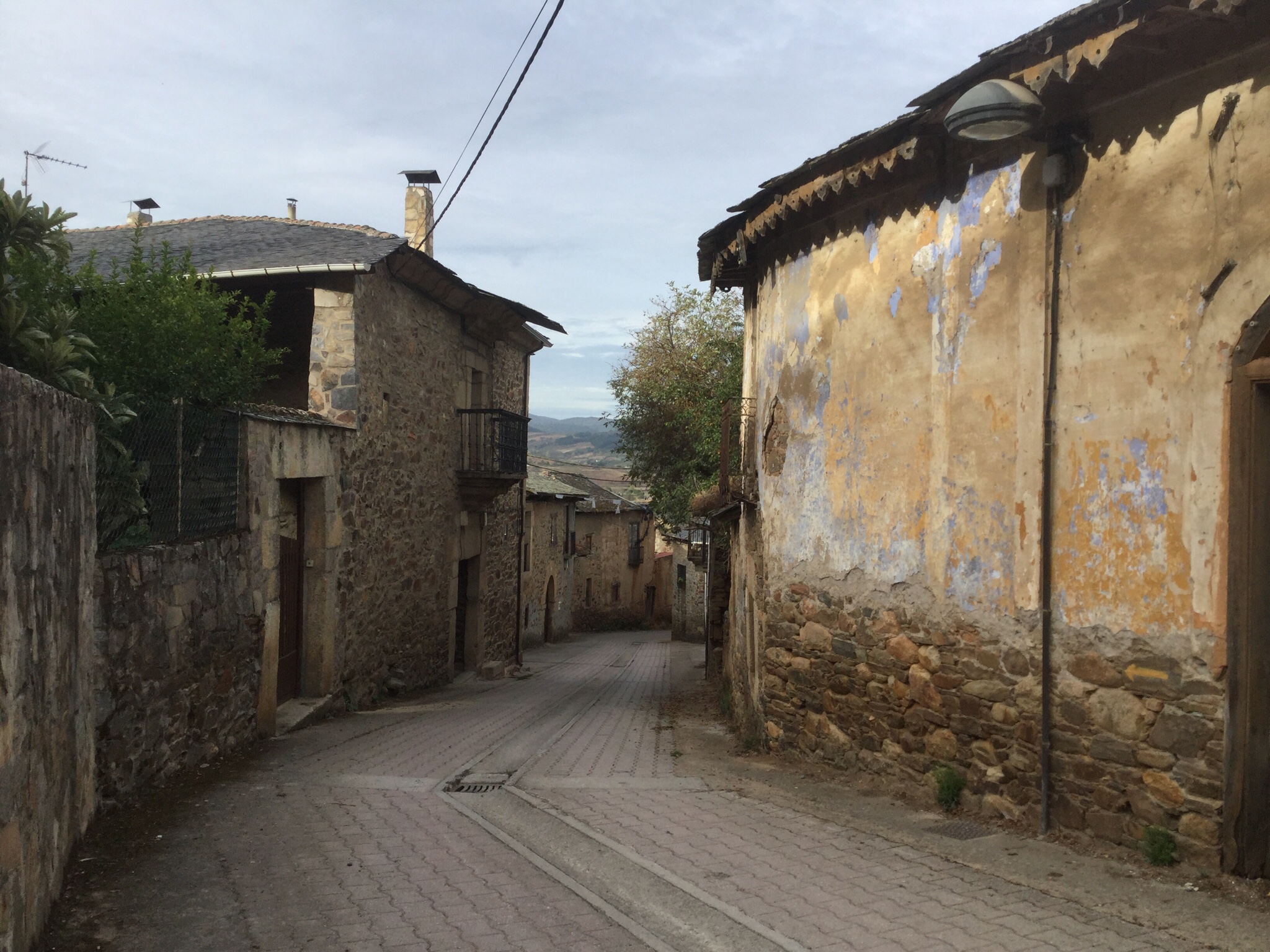
The yellow arrows through Ponferrada led us to what is known as the Castillo de los Templarios. A huge castle that we couldn’t resist visiting. It has a huge history. It began as a Templar Castle to help protect pilgrims on their journey to Santiago. Over the centuries there have been several significant modifications. Now there are huge restorations, necessary but not completely in keeping with the original castle. I just wish we had had more time to explore it fully.
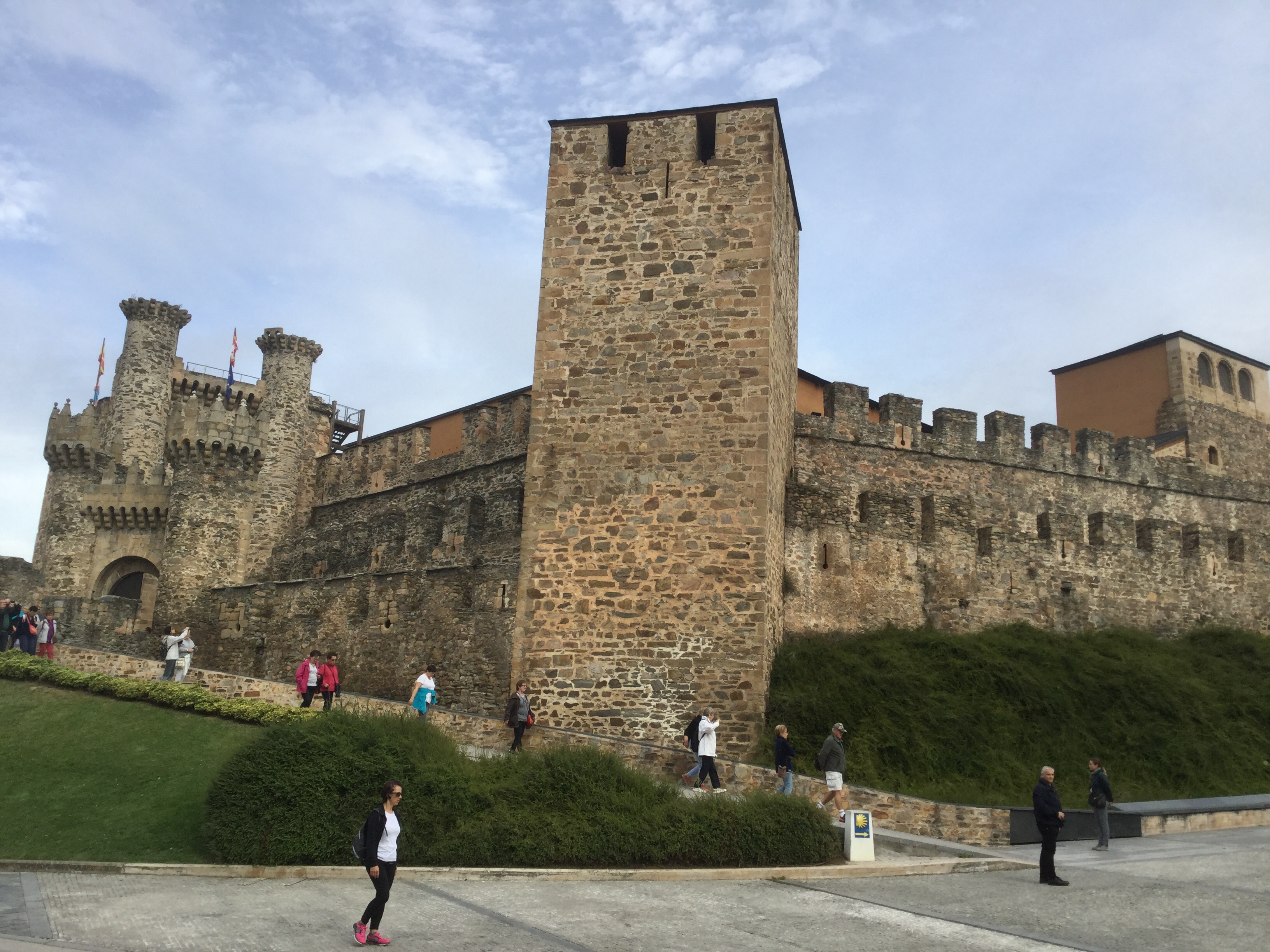
After leaving suburbia our walking paths led us through abandoned buildings
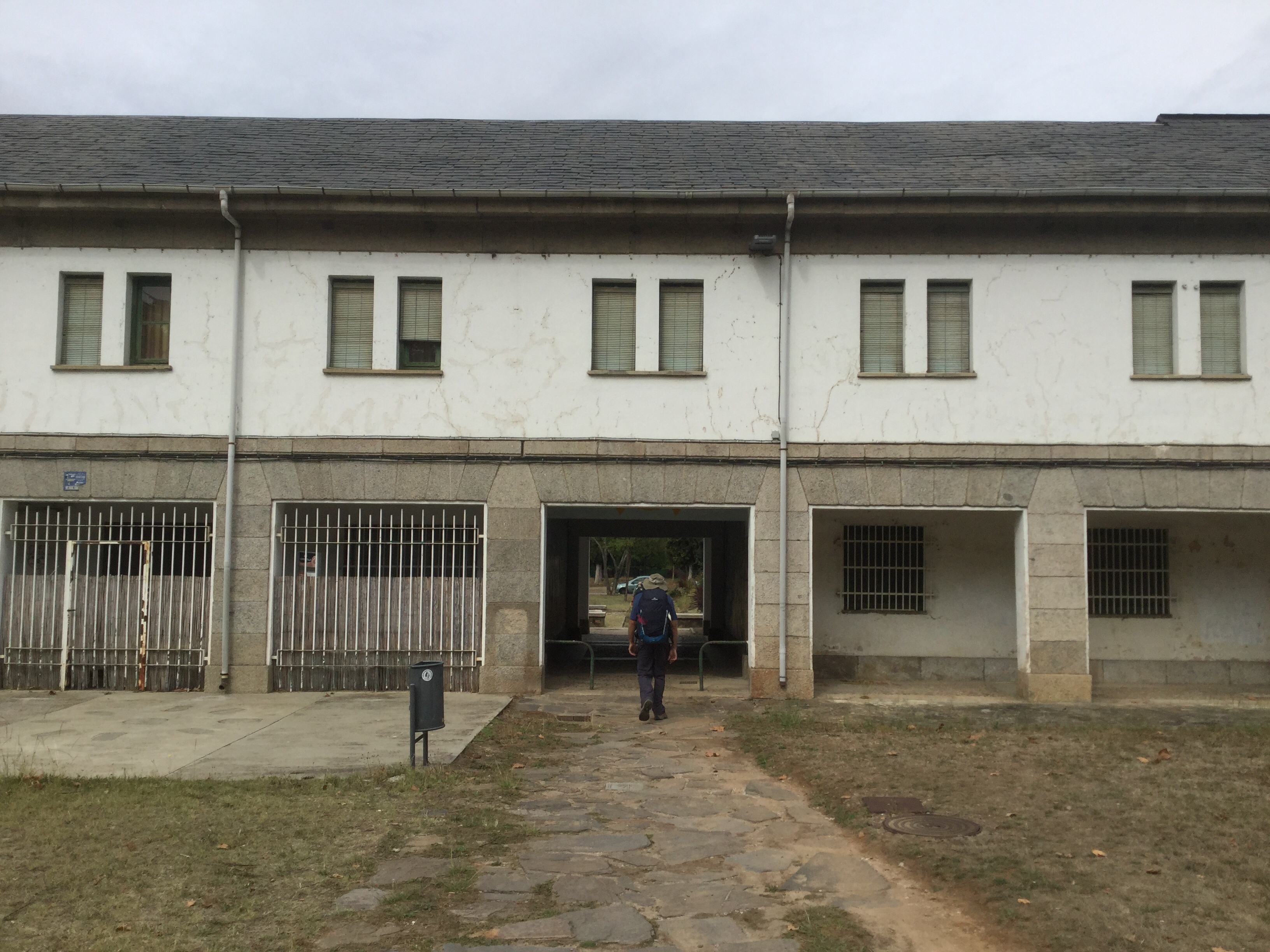
and along roads some overgrown with blackberries. Thorny Dave suddenly lost his hat, he turned around to find it had been taken by a blackberry vine. As he tried to retrieve his hat he found that he couldn’t move backwards or forwards as his backpack had become entangled by another vine. Poor Thorny Dave had to be rescued.
